May 23, 2021
Martha O'Kennon
The Dame's Rocket is all over the place now. There are three colors: this purplish-pink version, white, and the light purplish-pink. The Dandelions are peaking too: their bright yellow blooms punctuate the green grass.
Third, the Red Columbine with white centers was worth waiting for!

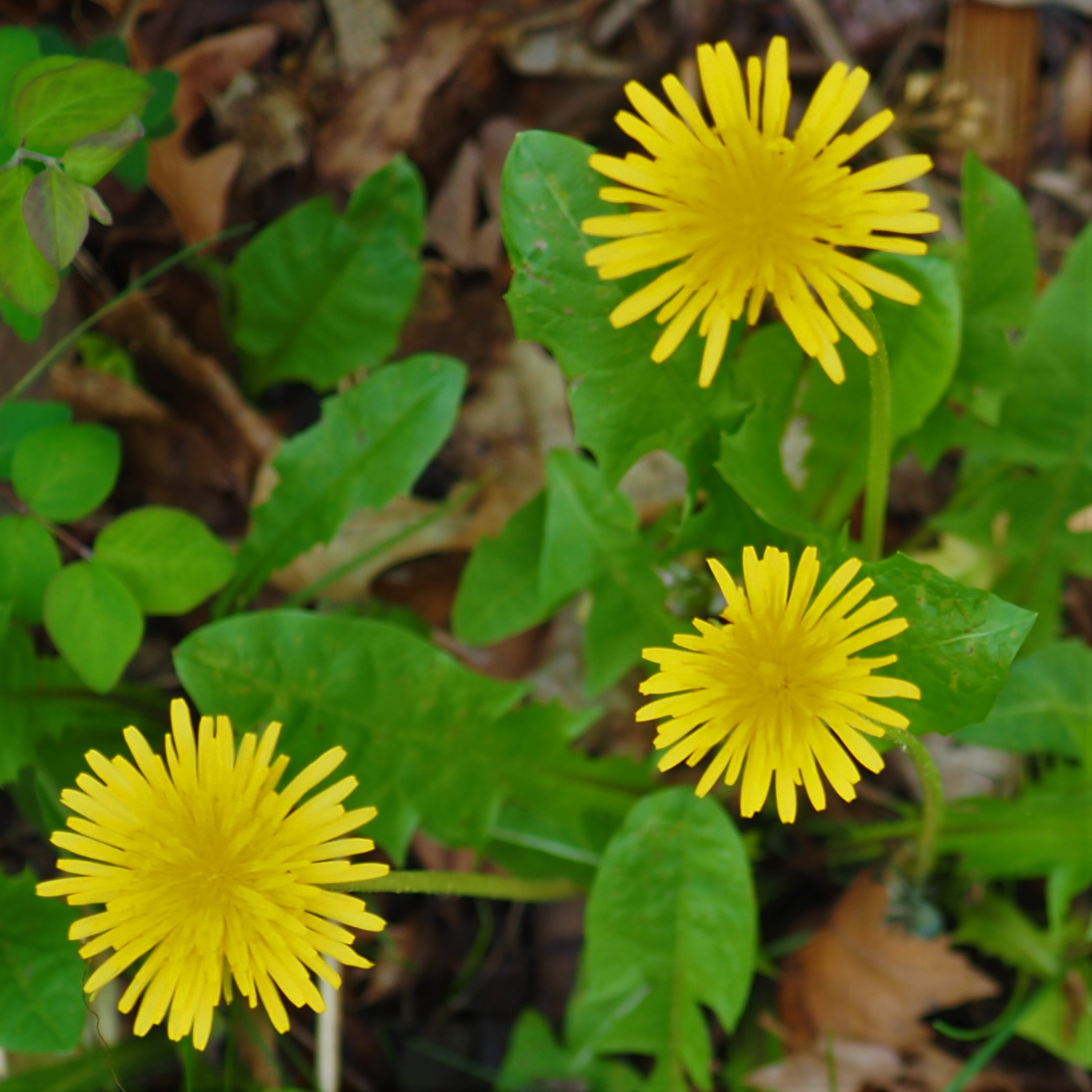
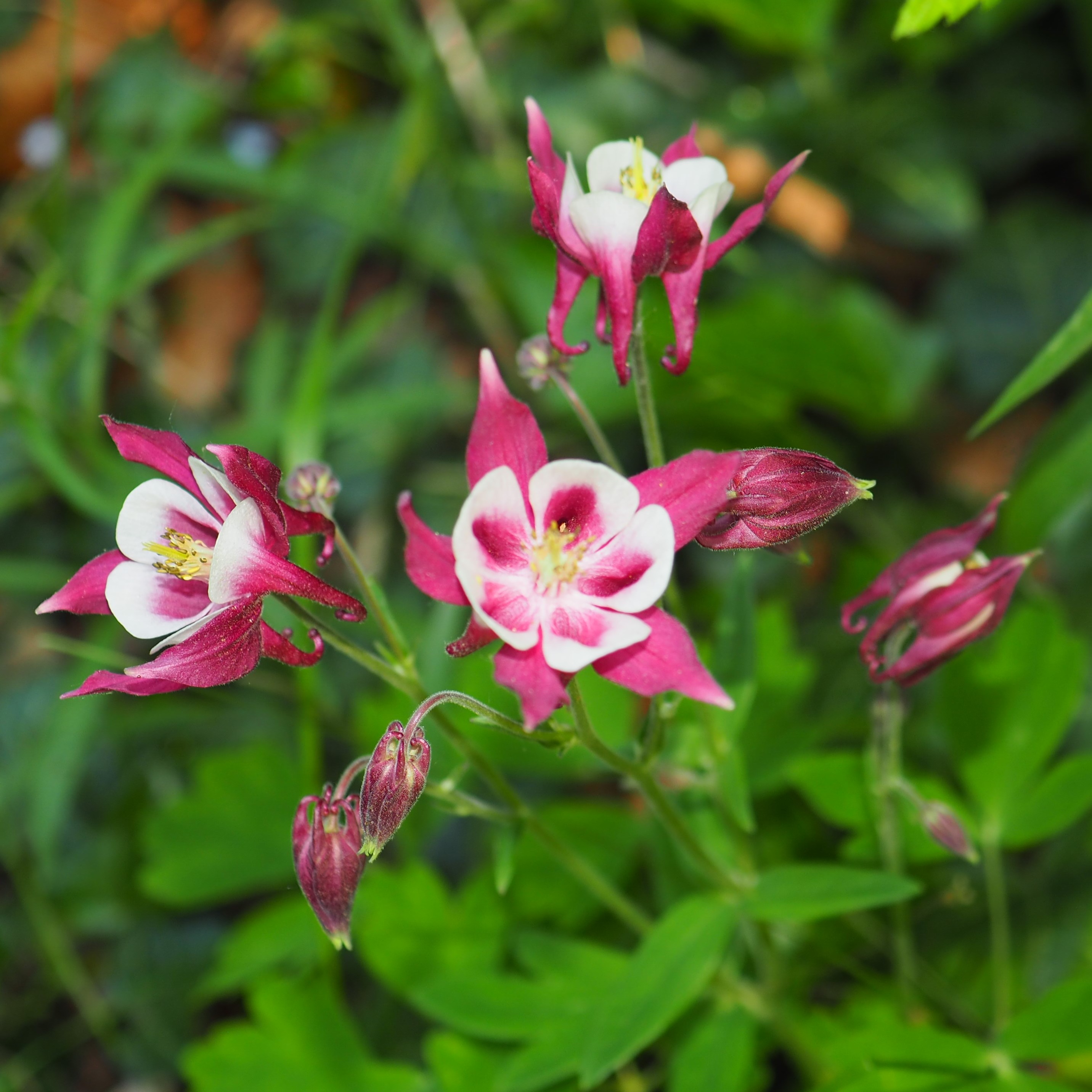
Remember that there is information in the name of the file for each image. You can see it by mousing over the image - look at the lower left of the screen. Or you can click on the image to get to the (usually) larger image. Then the info is displayed in the address line above. Sometimes the second click will actually display a different view of the original image.
It has been QUITE warm. Good thing the Heating people came over yesterday to tune up the AC. It isn't even the Summer Solstice yet. The Ants are, as usual, racing about on the shop wall in the back yard, or on the sidewalk out in front. First is a sidewalk runner, the Eastern Black Carpenter Ant; followed by another one on the shop wall. Now, just for a surprise, this one running on the shop wall is either a Punctured Ant OR an Immigrant Pavement Ant. My vote is for the Punctured Ant. It has a round head (an Immigrant Pavement Ant would have had a squarish head), a droopy gaster (last segment), two round segments before the gaster and a round spiky end to the segment before the two round ones. On the other hand, I usually see them running on oak leaves and not on the Wall. The Immigrant Pavement would more likely be on the pavement, but not always. On the other hand, the back of their head is squarish. Steven Wang says maybe better to just say Myrmicine Ant, and that would cover both cases!
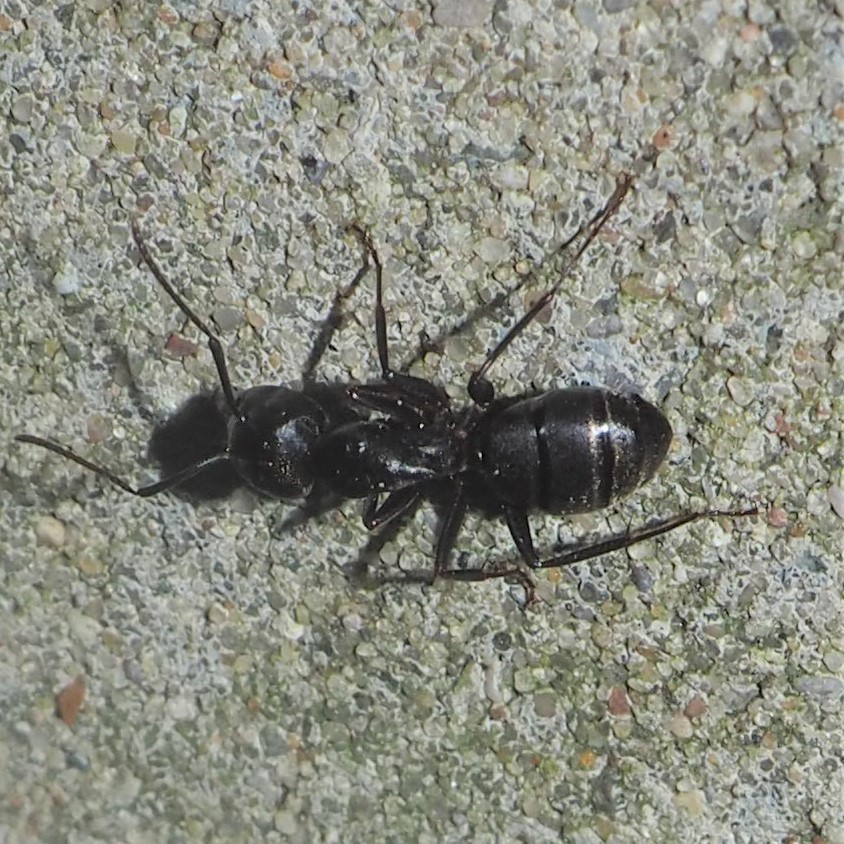
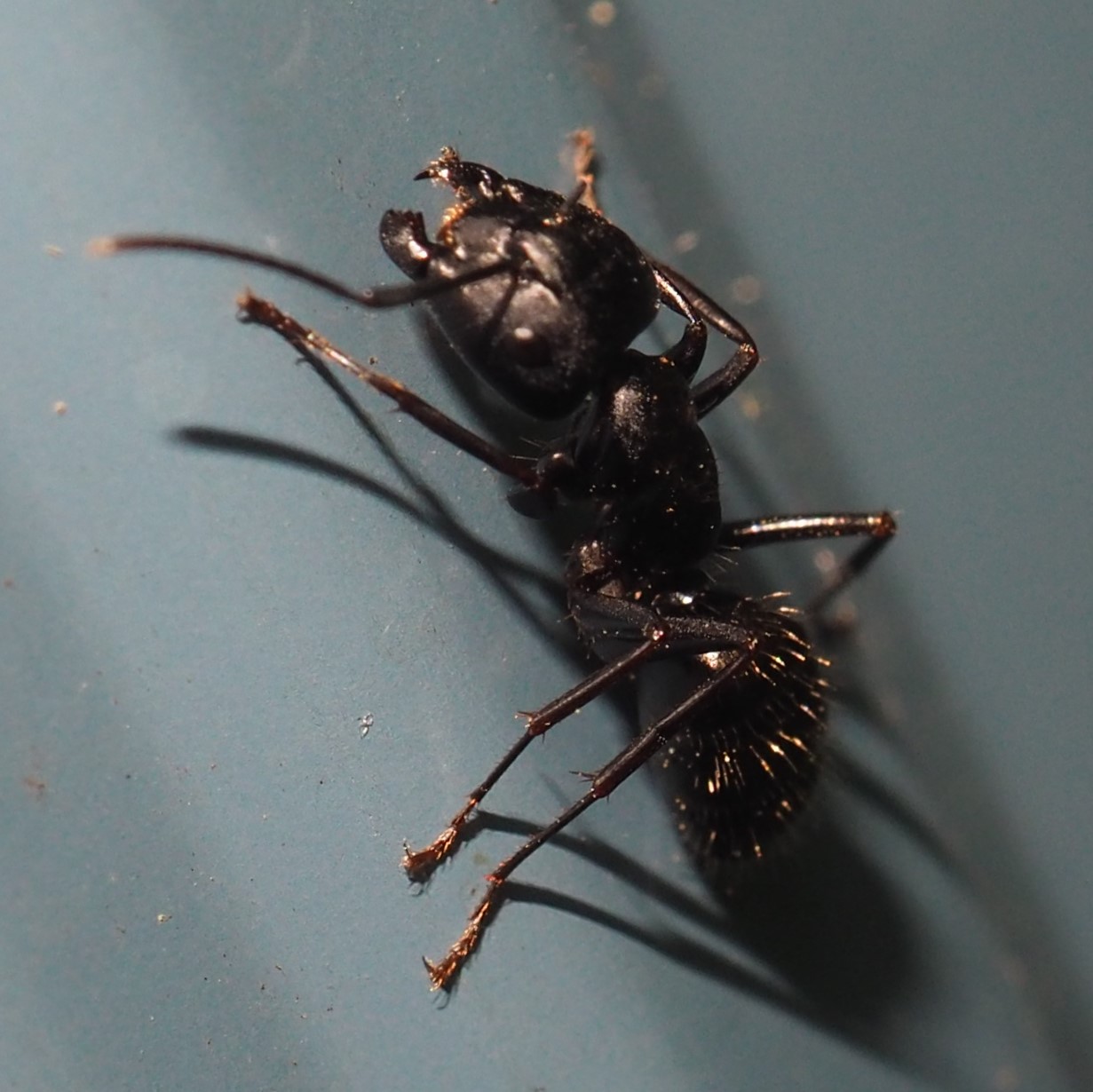
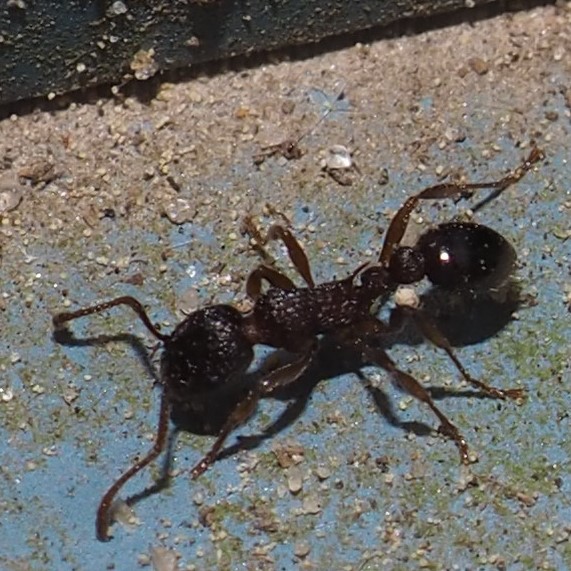
The Smaller Carpenter Ant tends to be shiny and with a reddish cast to its second segment, like this first Ant. Second seems to be a Scented House Ant. I guessed that because of its LONG gaster. I think the third one here is a Small Honey Ant.
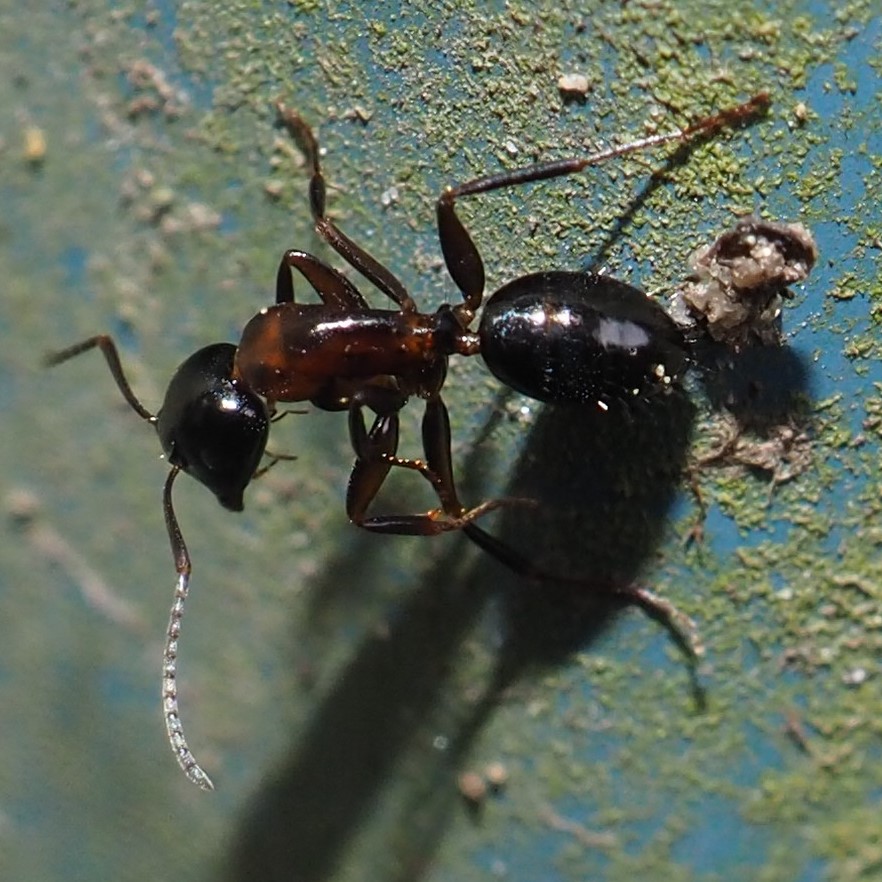
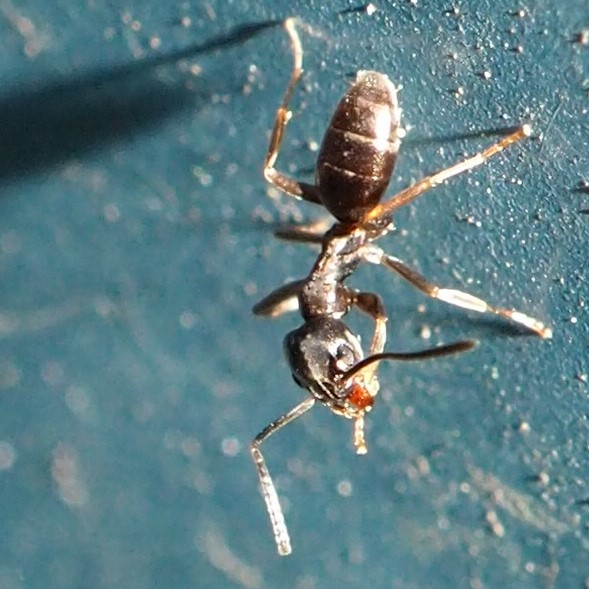

Here is an Ant washing up. She is facing away from us. You can see her working on her middle first big segment, then she bends over to clean her tummy and butt region. Last she tries to get hold of her antennae, one by one, to comb them nicely. A lot of people are surprised to learn that insects, like most creatures, keep themselves as clean as they can!

Let's see. In the past couple of weeks we have seen the Ectopsocus meridionalis Barklice start to show up; we saw one lay eggs, and now we're waiting breathlessly to see if any of the several groups of Barklouse eggs will hatch. Here is the one egg mass that appeared where there had been an adult. Right underneath that mass is an older clutch of eggs, but we don't know who or what might hatch from them. What am I doing here now? I finished up most of the rest of the blog but suddenly found a picture that answers part of a question that should be here. But if you can stand it, the answer is going to be according to the TIME I got the answer, that is, right at the very end of this Blog!
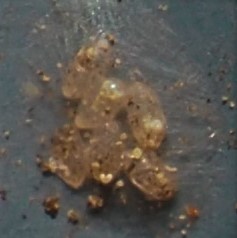
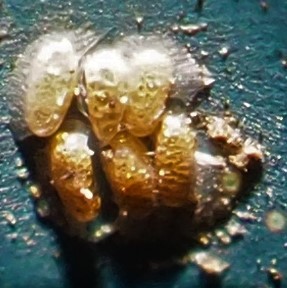
Meanwhile, the little nymphs, which I have been calling Graphopsocus cruciatus, on the East Wall, have grown, and for the last two days have been hatching into, guess what, young adult G. cruciatus!
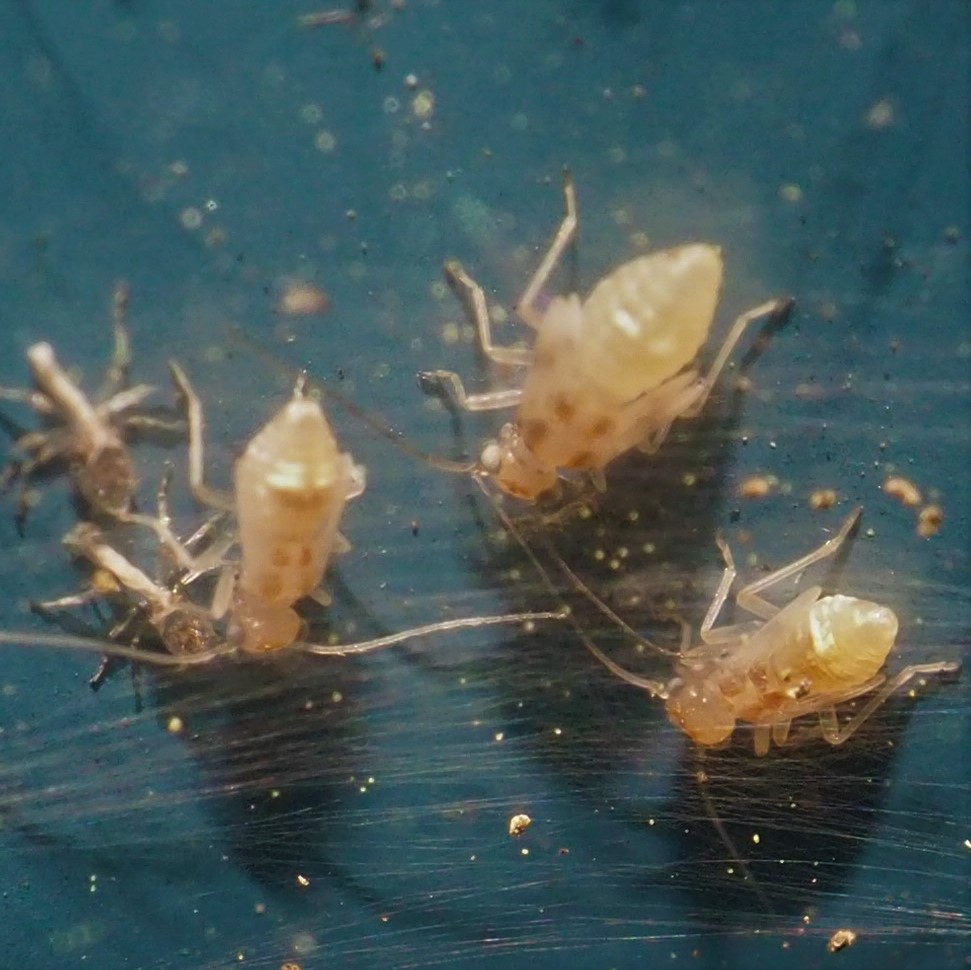
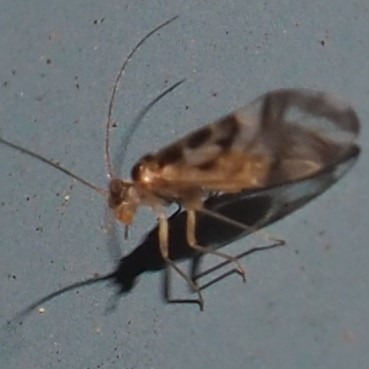
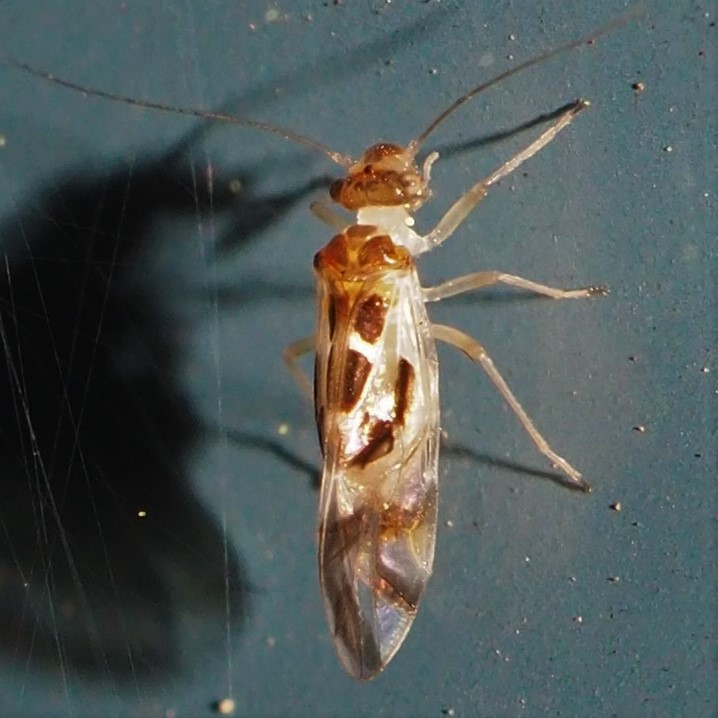
Some other nymphs (besides G. cruciatus) have been appearing on the East Wall and the North Wall. This one is probably a member of the Valenzuela genus. It has red eyes and a yellow body (with none of the thoracic dots we have been associating with G. cruciatus). Another thing that fascinates me is how some of the random-seeming pebble or sand formations on the North Wall are beginning to show signs of something that looks alive. In my opinion, the last picture in this section is the most creature-like thing on the North Wall. Doesn't it look like a little bug looking forward?
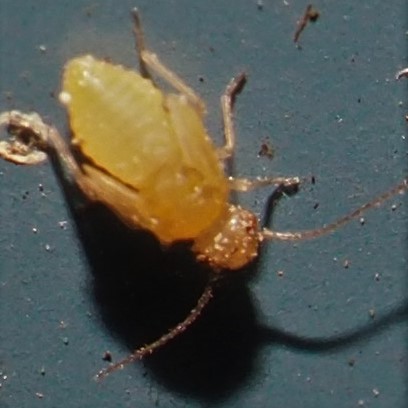



Usually when I shoot a picture on one of the Walls (and I've been taking a lot of pictures of the North Wall to see if there is anything that reminds me of a nymph or ANYTHING that looks like a bit of Barklouse), all I get is little piles of sand, and the sand particles usually look square-ish or irregular.. But more and more I seem to see little components that resemble nymphs or bits of a living organism. Here are some of them.
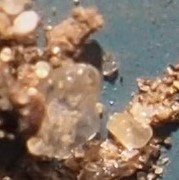
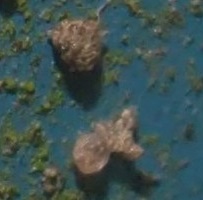
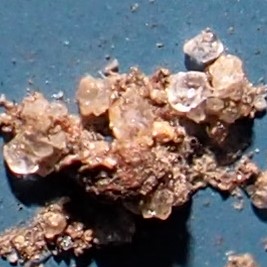
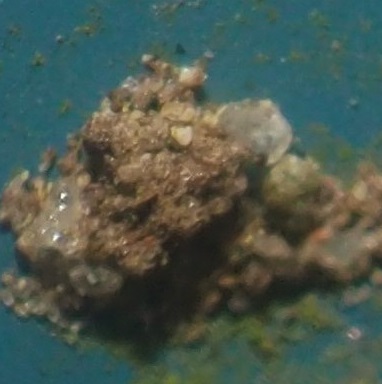
More Beetles I don't recognize. A Pinkish one. Oh, sorry, I do get this second one. It usually first appears when the Goutweed blooms. It's Valgus hemipterus. And I believe the third one is Oulema collaris, named for its red collar. These two are mating. (There are a lot of pictures in collections which show these tiny beetles mating!)
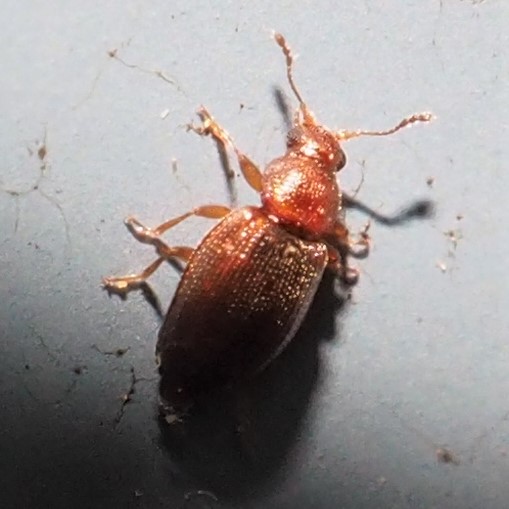
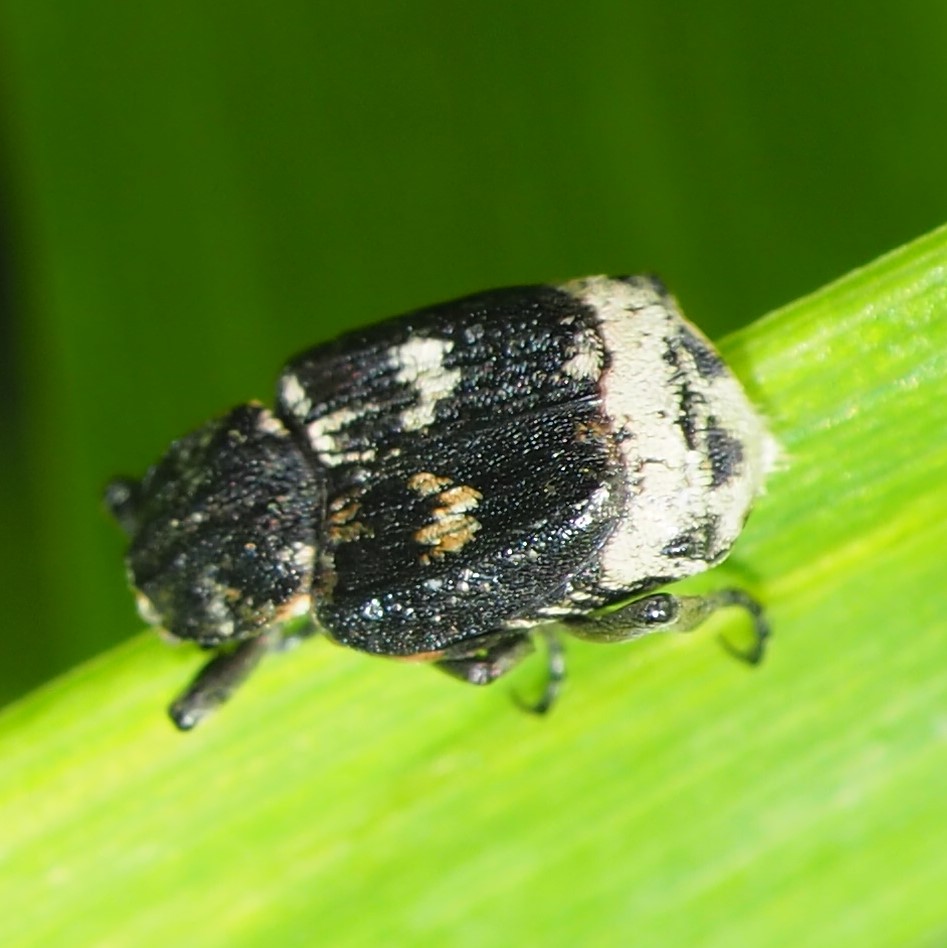
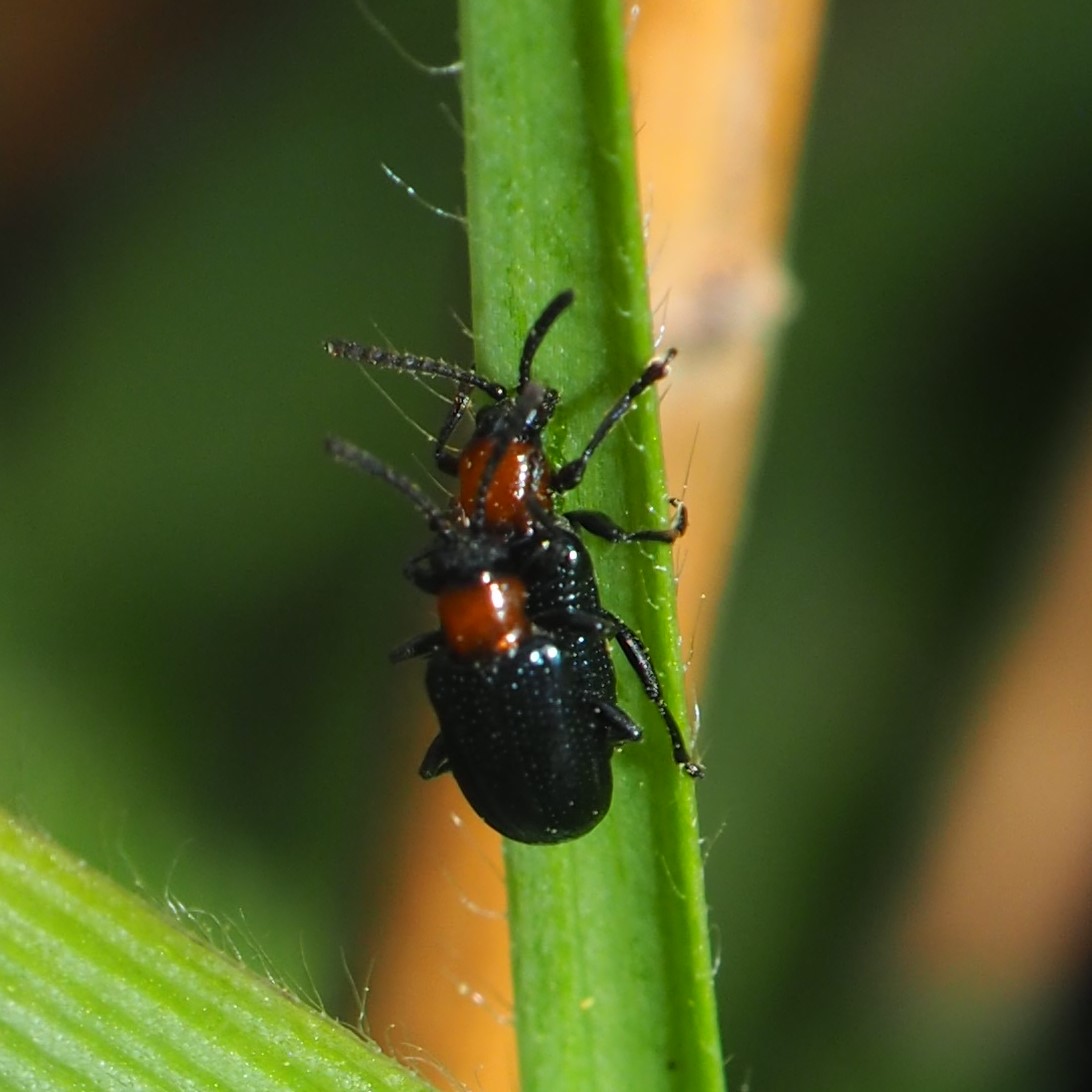
And at last, Weevils. I love Weevils but they are hard to ID. Only the last one, the Redbud Bruchid, is so common it is easy to recognize.

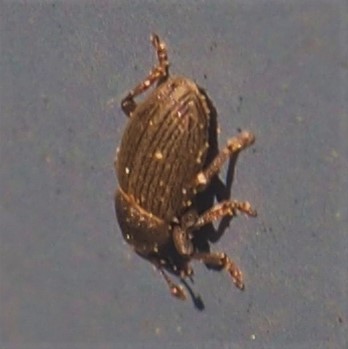
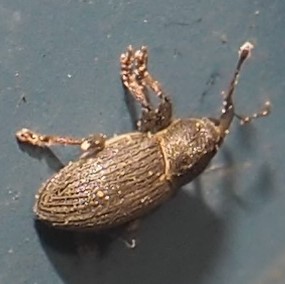

Now to the Bugs. A surprise is in store for you Assassin Bug lovers. Usually what we are seeing is the nymphal form. Here are a few of them. Pink or green, they are Zelus luridus. All that matters is that the eyes are red. If they aren't, then we are looking at the only other Zelus species in Michigan, Z. tetracanthus, portrayed in picture 3. It has grey or brown eyes.
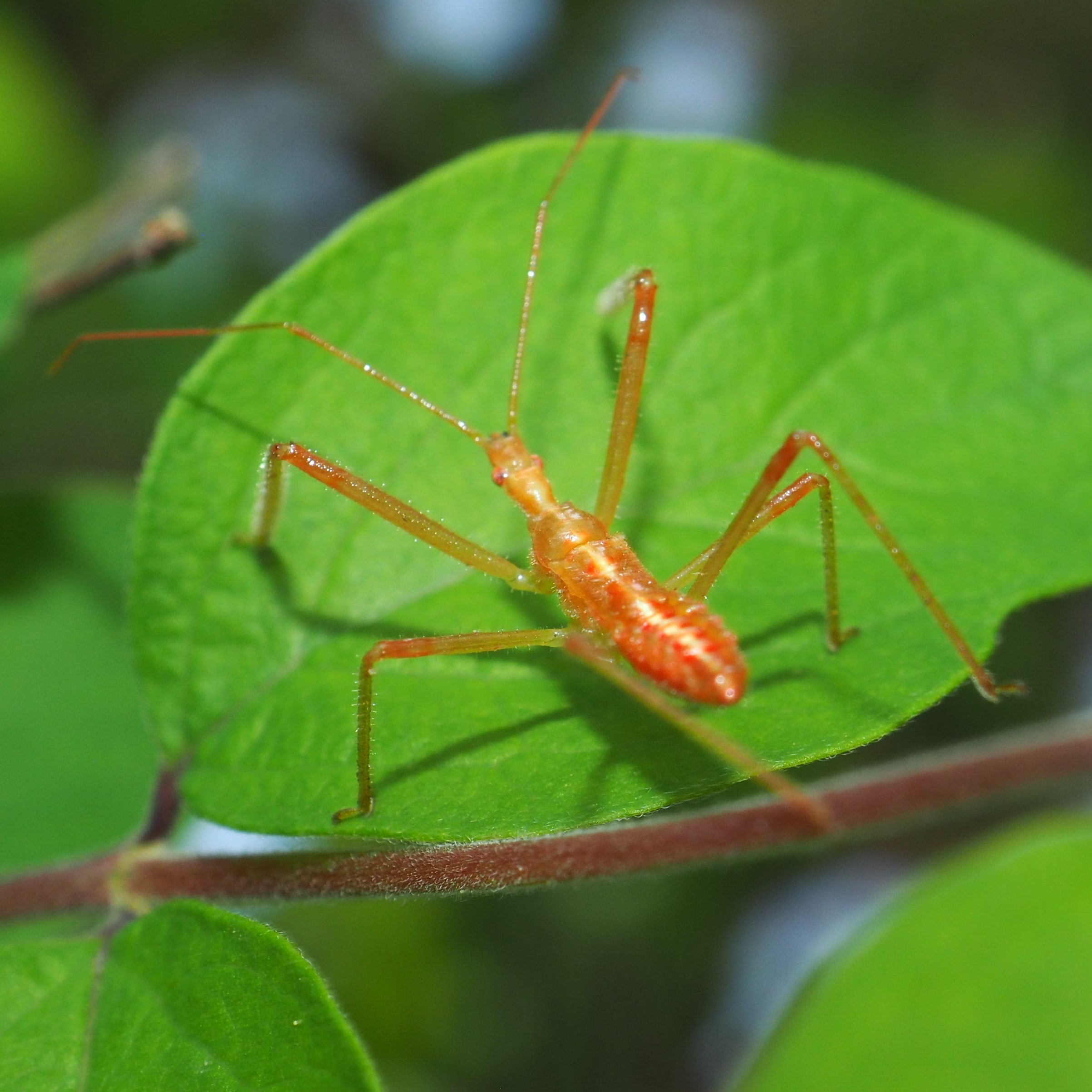
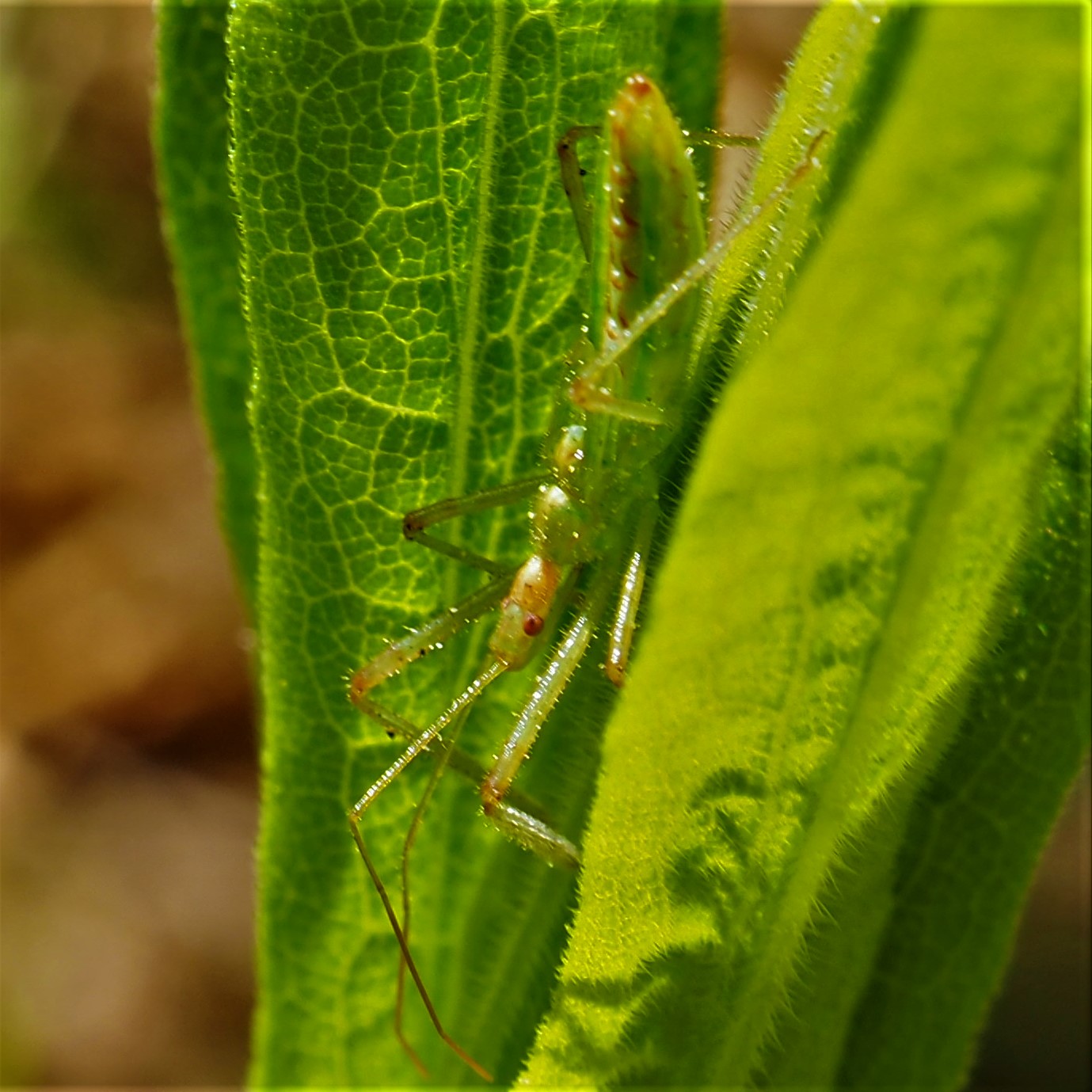

Here we are just about out of photos. Start here Sunday!
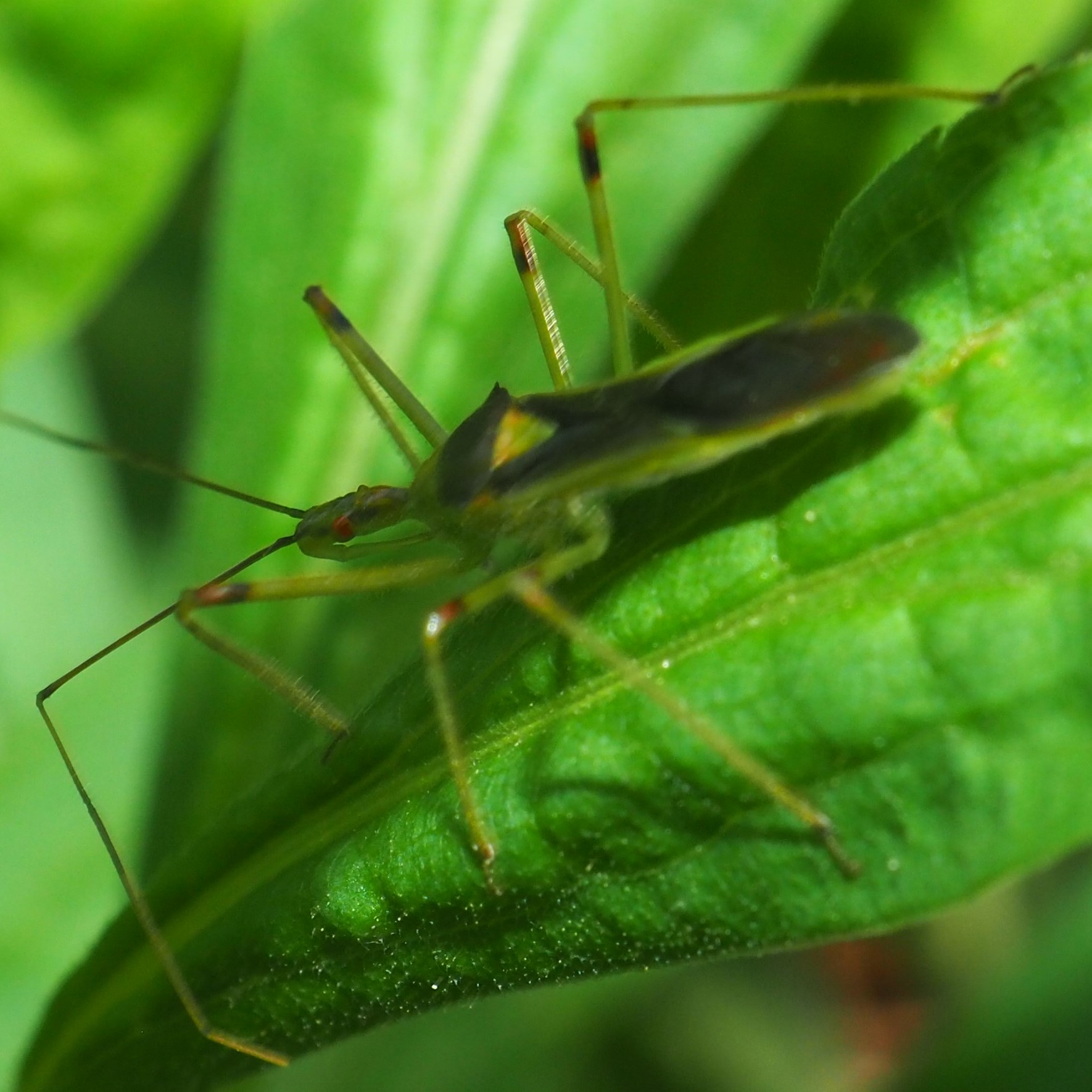
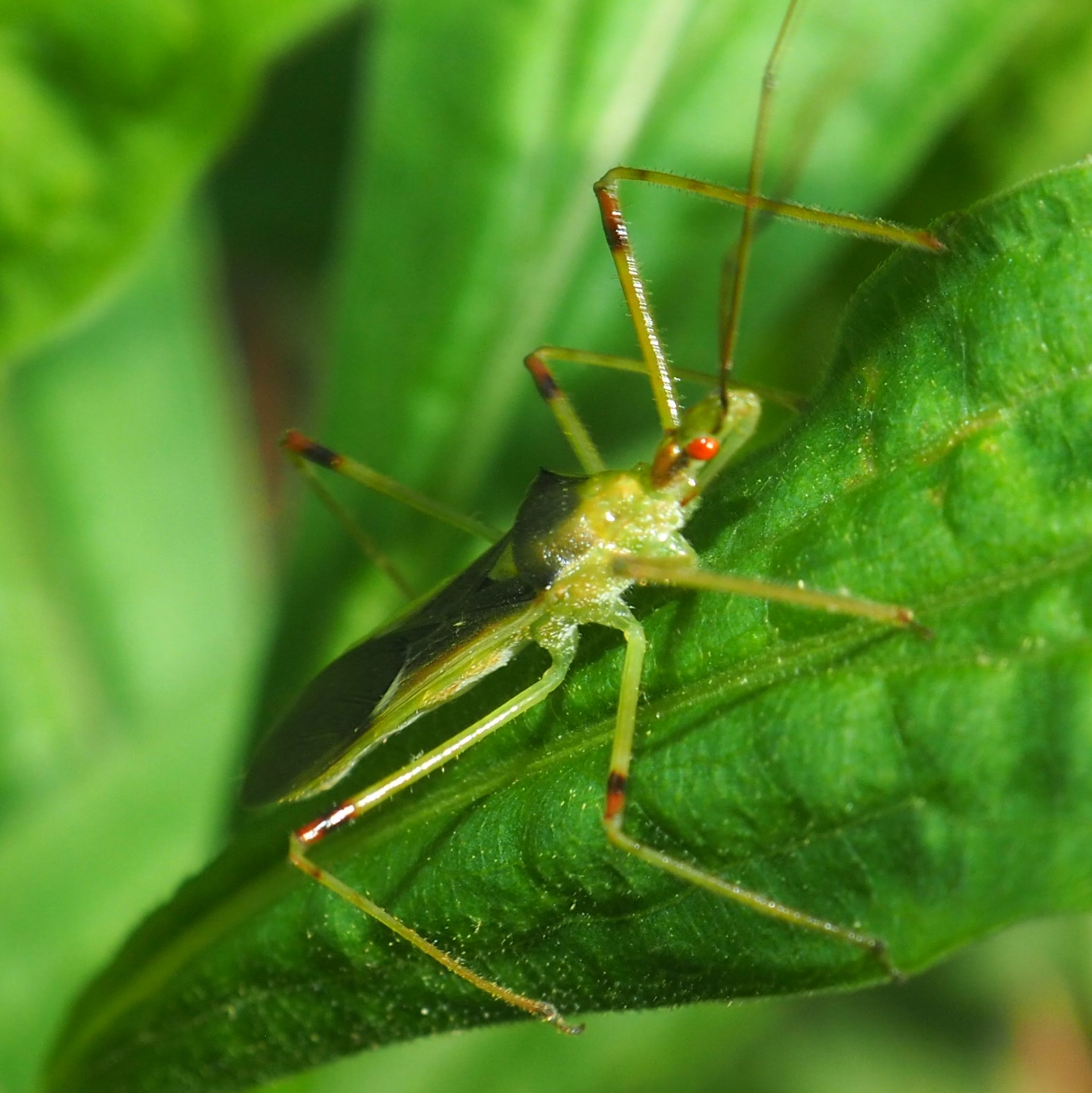

Now if you thought there was only one kind of Assassin Bug, you have a treat in store. When I was patrolling the window-sills looking for Cellar Spiders, I suddenly saw an old friend. This is also an Assassin Bug but a different family. This monster has the folded arms like a Praying Mantis, but it is a True Bug, one of the Thread-legged Bugs. This is Empicoris errabundus. It is so small that it resembles a thin stick about 3 or 4 mm long (picture 2). Only when you zap it with a macro lens does it become this creature. They are true assassins of Barklice. But so magnificent in conception. Third here looks nothing like the monster in pictures 1 and 2. That's because its wings haven't grown out yet. It is the same species, but a juvenile. I'd like to thank James Bailey for straightening that out for me last year!
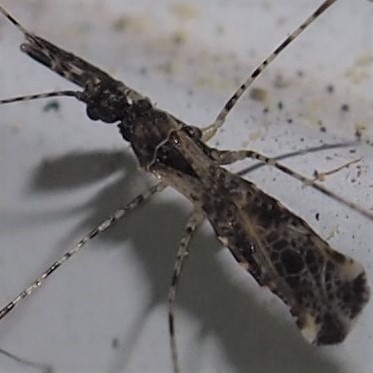
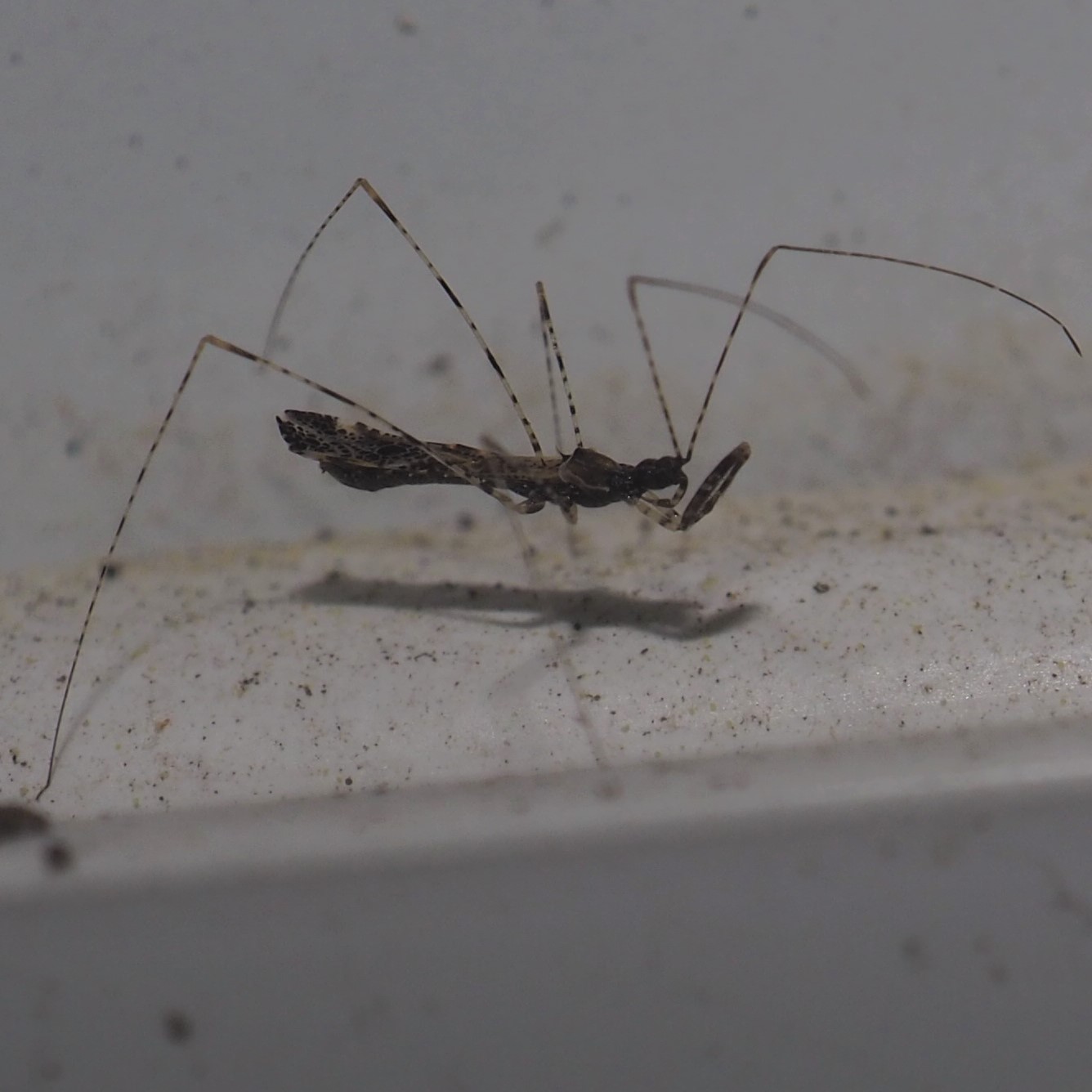

This fellow with the yellow antenna-tips is Acanthocephala terminalis, one of the Leaf-footed Bugs. The little red-and-black creature is the nymph of the Four-lined Plant Bug. It is multitudes of these tiny things that injure a lot of tenter plants, like Mint, Chinese Lanterns (just a few of the plants they have destroyed for me!)
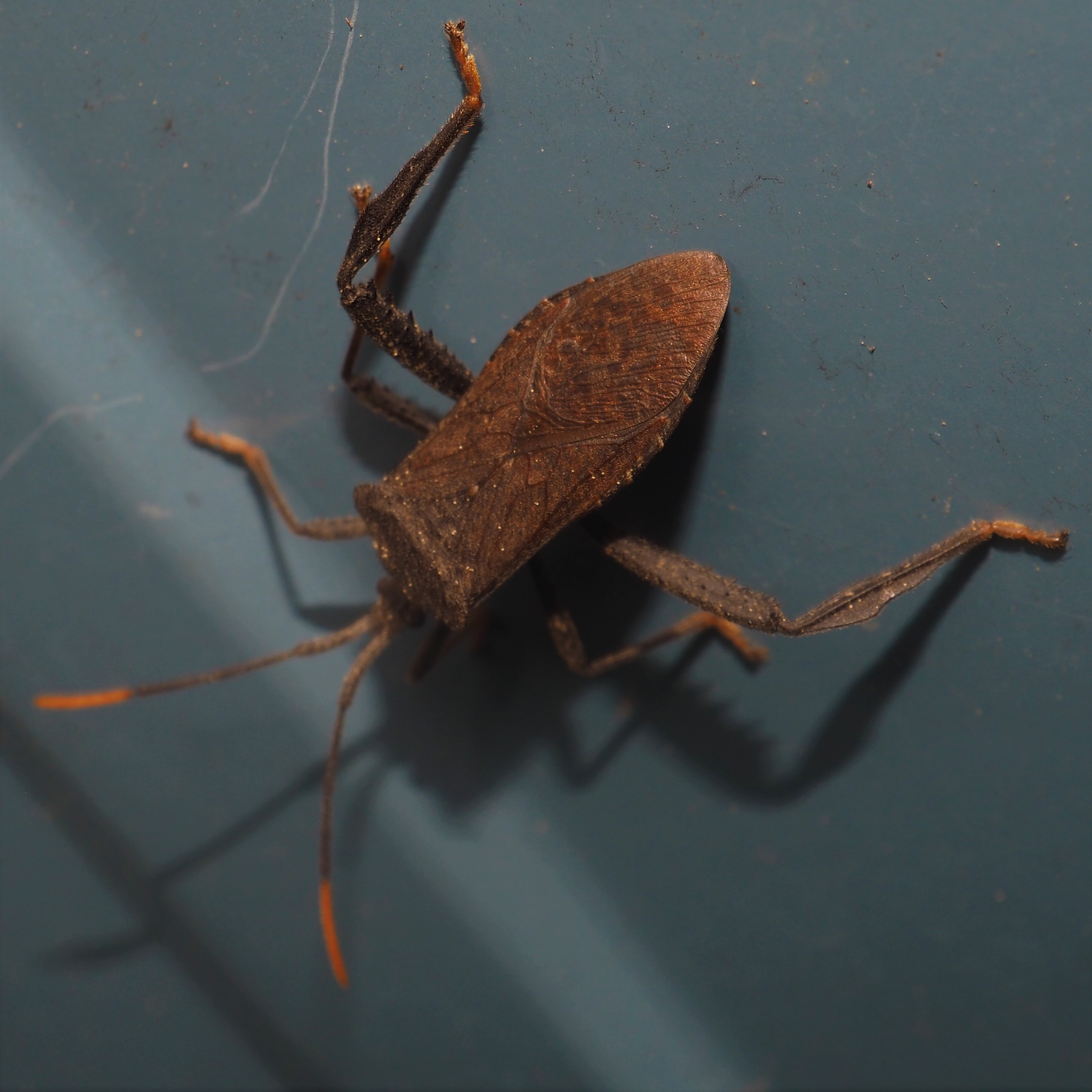
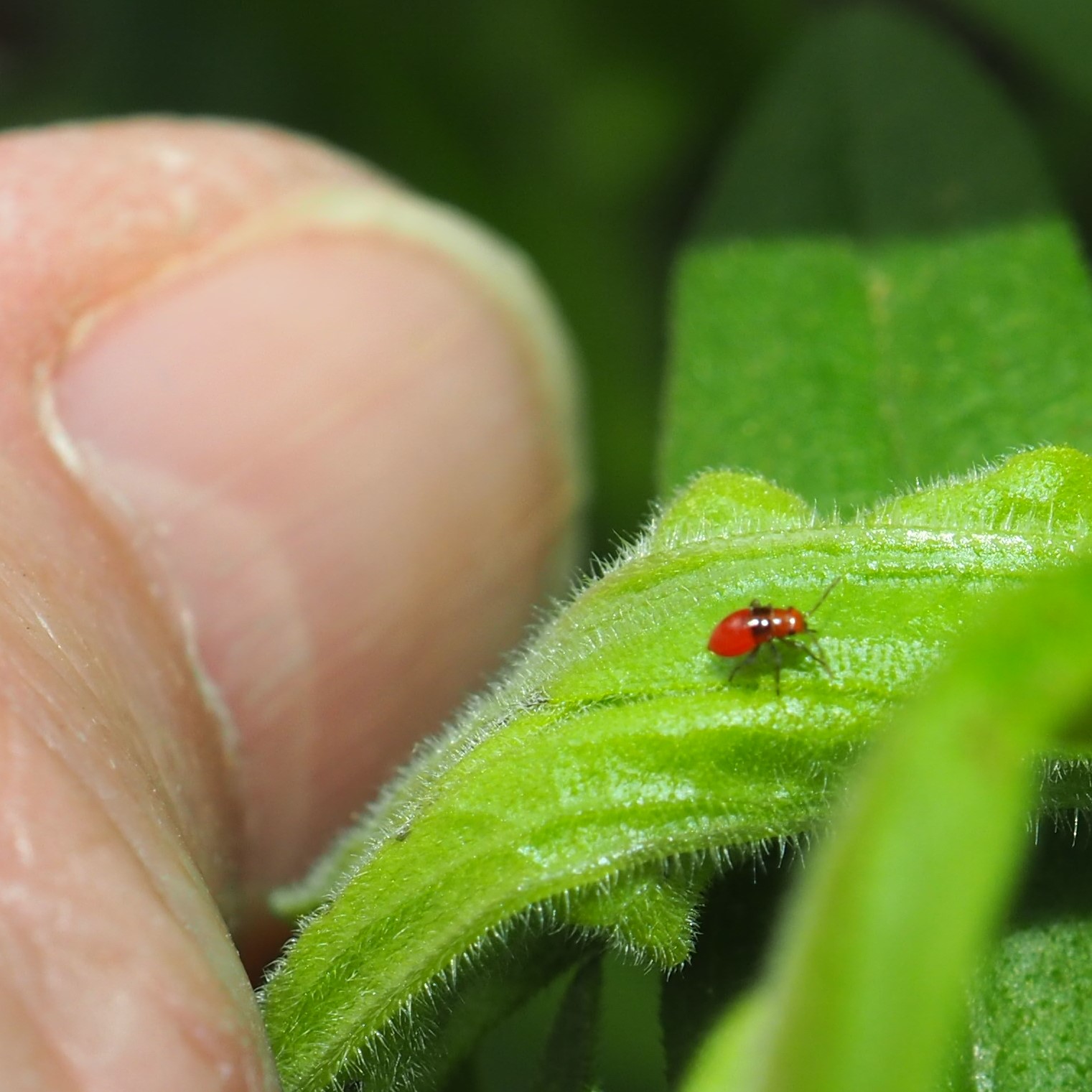
We didn't have many different Leafhoppers this week. Just a few. This first one showed up on May 16. At first I mis-identified it as one of the Eratoneura, but Kyle Kittelberger ID'd it as Erythroneura palimpsesta, a leafhopper I first saw a year or so ago. It isn't a well-known hopper, so we are flattered to host it.
This week we have started seeing what I THOUGHT was Agallia quadripunctata, but maybe it is a different Agallia, according to Kyle. But my biggest boo-boo this week was thinking this third picture was a Leafhopper, which it roundly is not. It is a dorsal view of a Dustywings, which I'm only used to seeing in a lateral view!
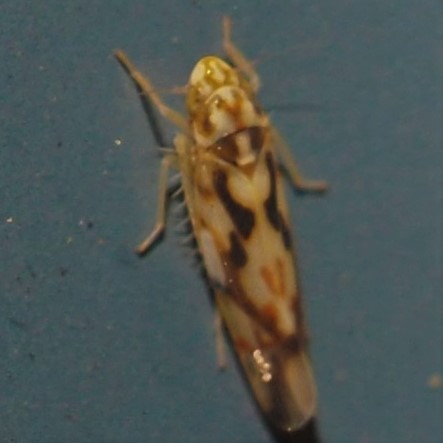
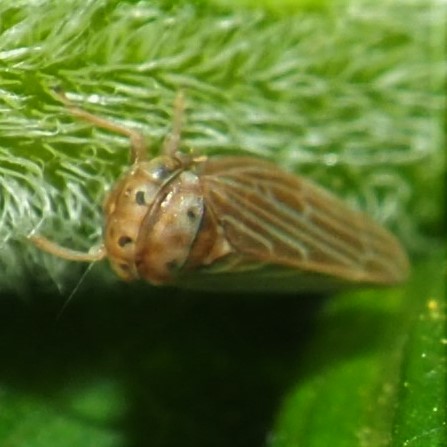

Let's look at some more Dustywings pictures. By the way, they are closely related to Lacewings and NOT to Leafhoppers!
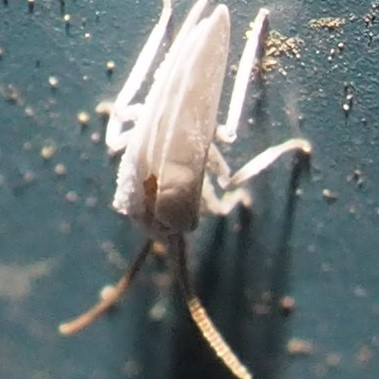
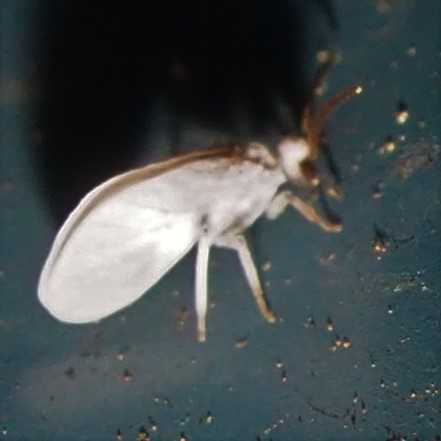
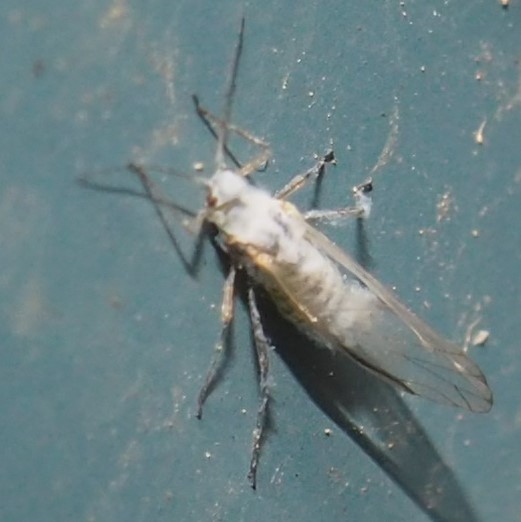
And now to the Flies. I didn't get very many (if any) pond pictures this week. The Algae took over my nice clear pond water and so I am waiting for Monday for a shipment of Barley straw, which apparently slowly deters Algae from turning the water greenish-brown, a very un-relaxing view. Meanwhile the other day, late in the afternoon a couple of American Toads came visiting and calling for each other. But the next day it seemed that they had not decided to use this brown water for their trysts. I'm waiting to see it turn clearer so as to see if there were any Toad eggs laid. So, to the Flies. They were quite chummy this week too. This pair of Crane Flies thought that this was the place for their love-making too.
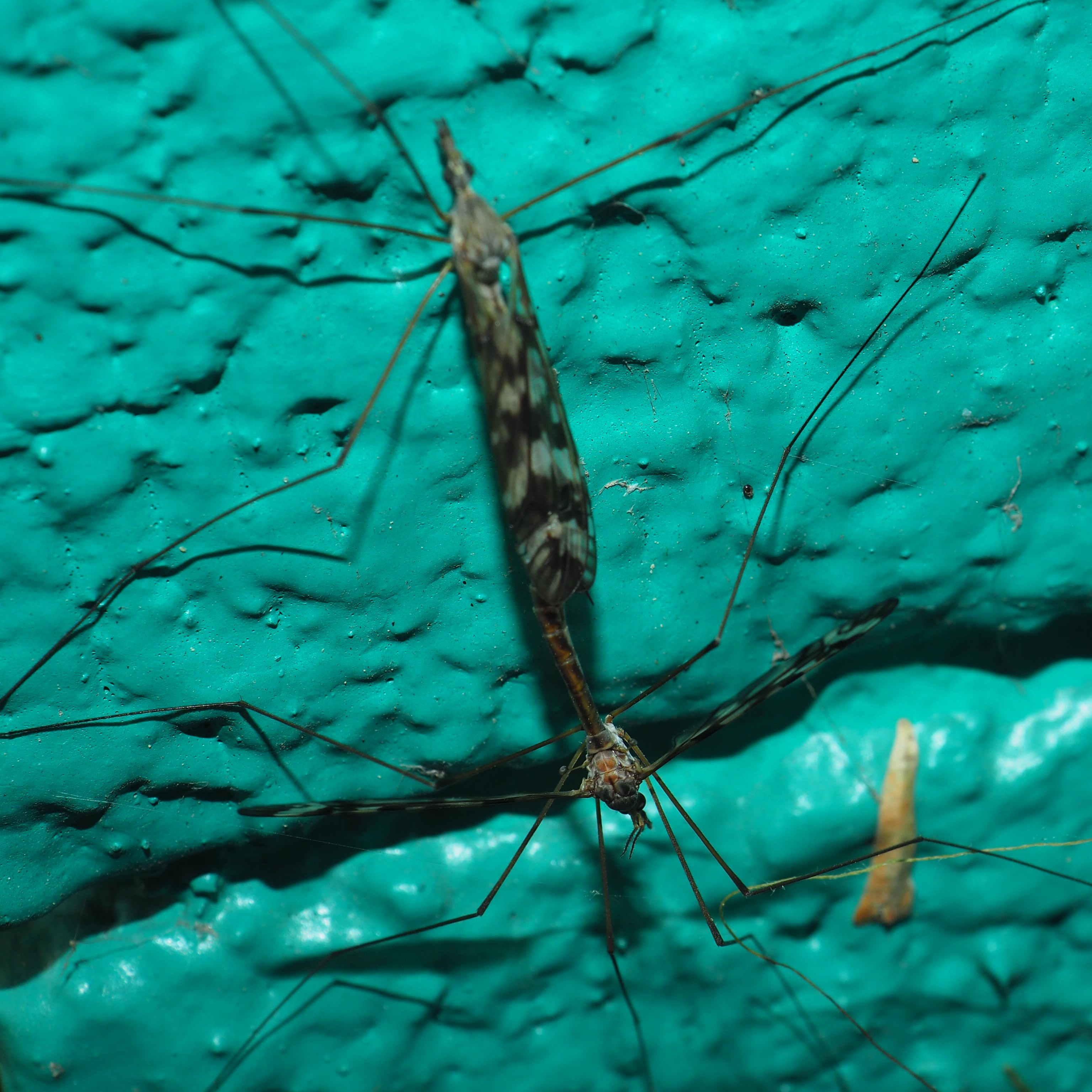
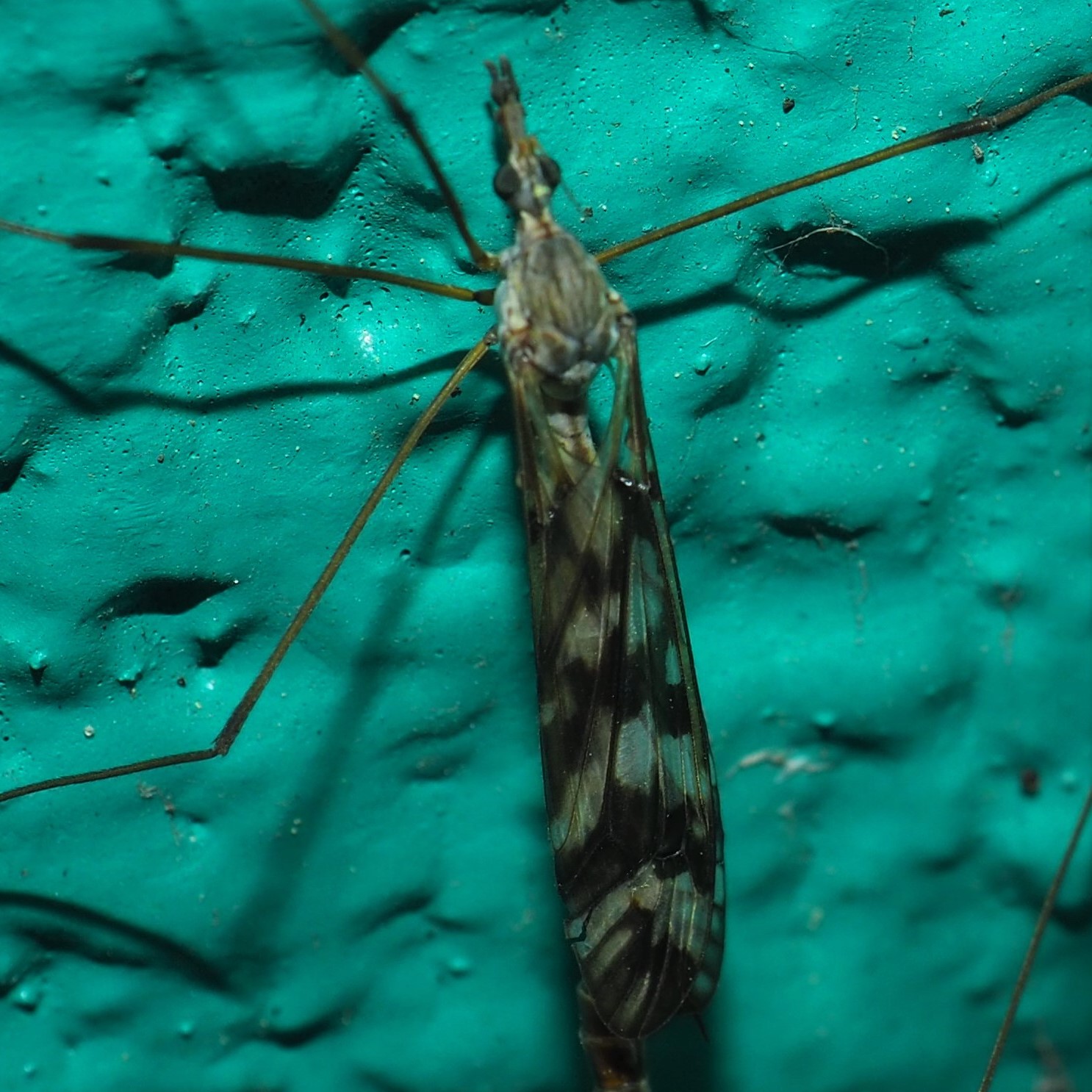
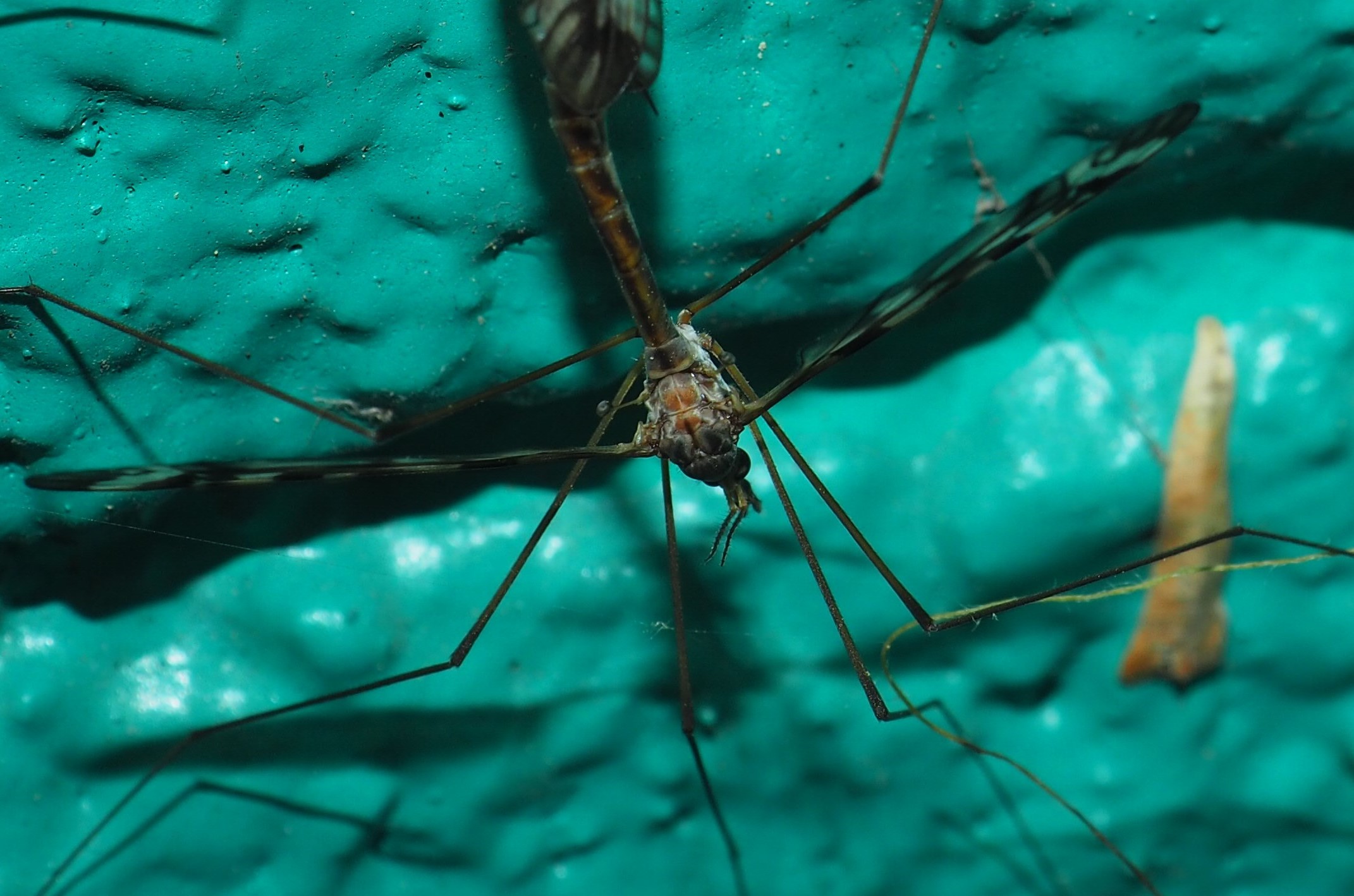
A female March Fly came calling too (first two pictures), but without her spouse in tow. Third is one of the two little male White-winged March Flies that visited today.
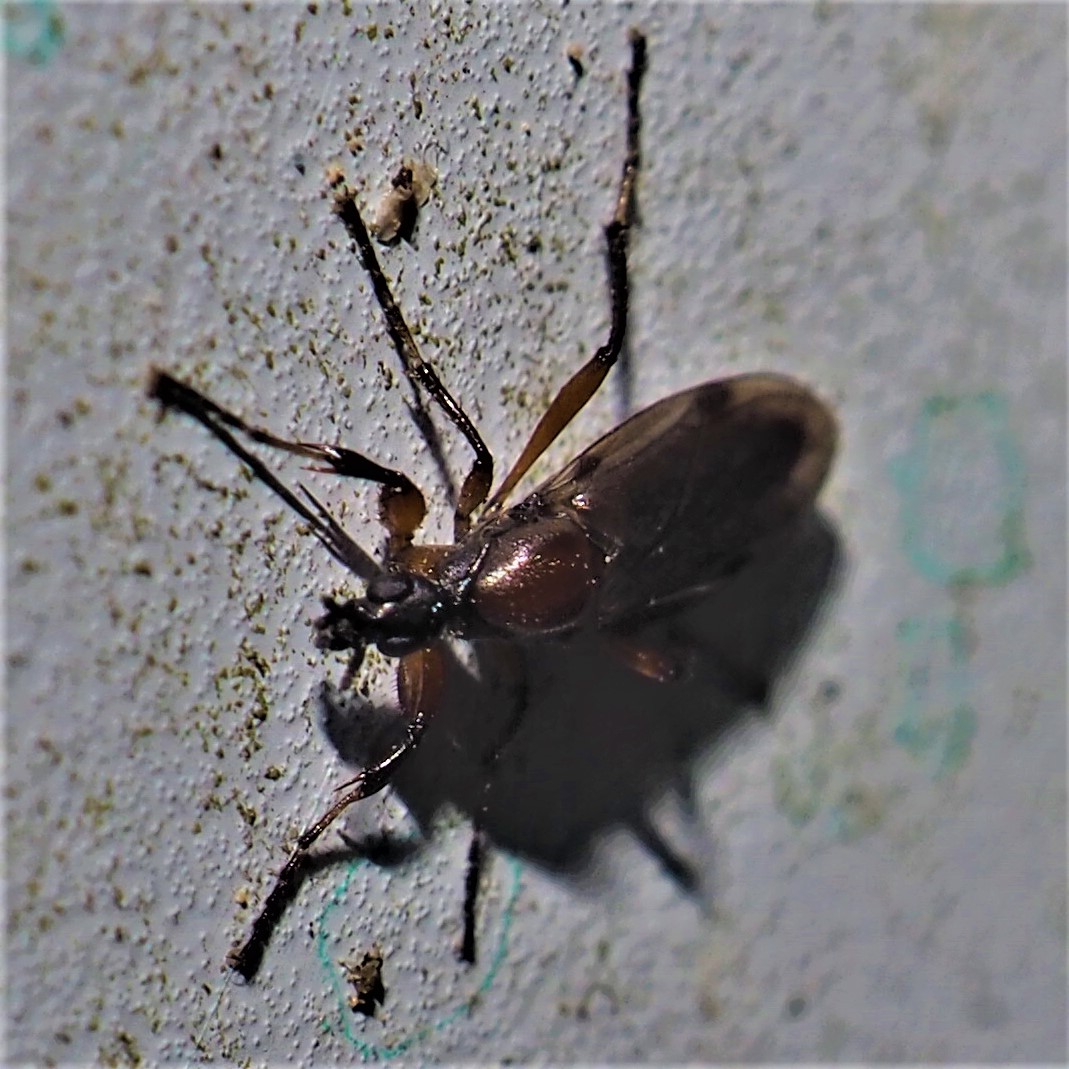

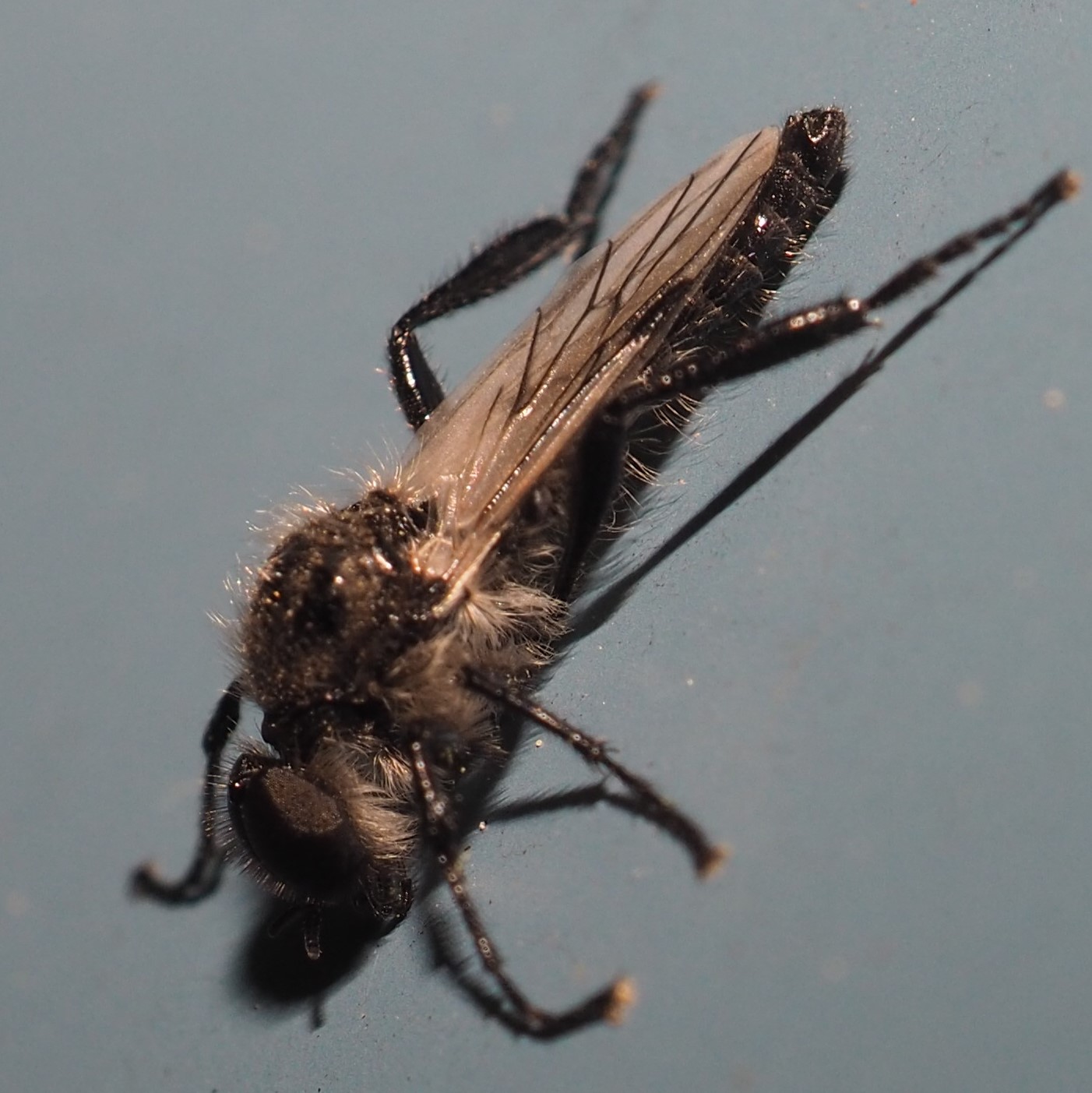
A handsome new kind of Fly stayed around for quite a while. Third might be a mating pair, or this Fly may have got its wings twisted.
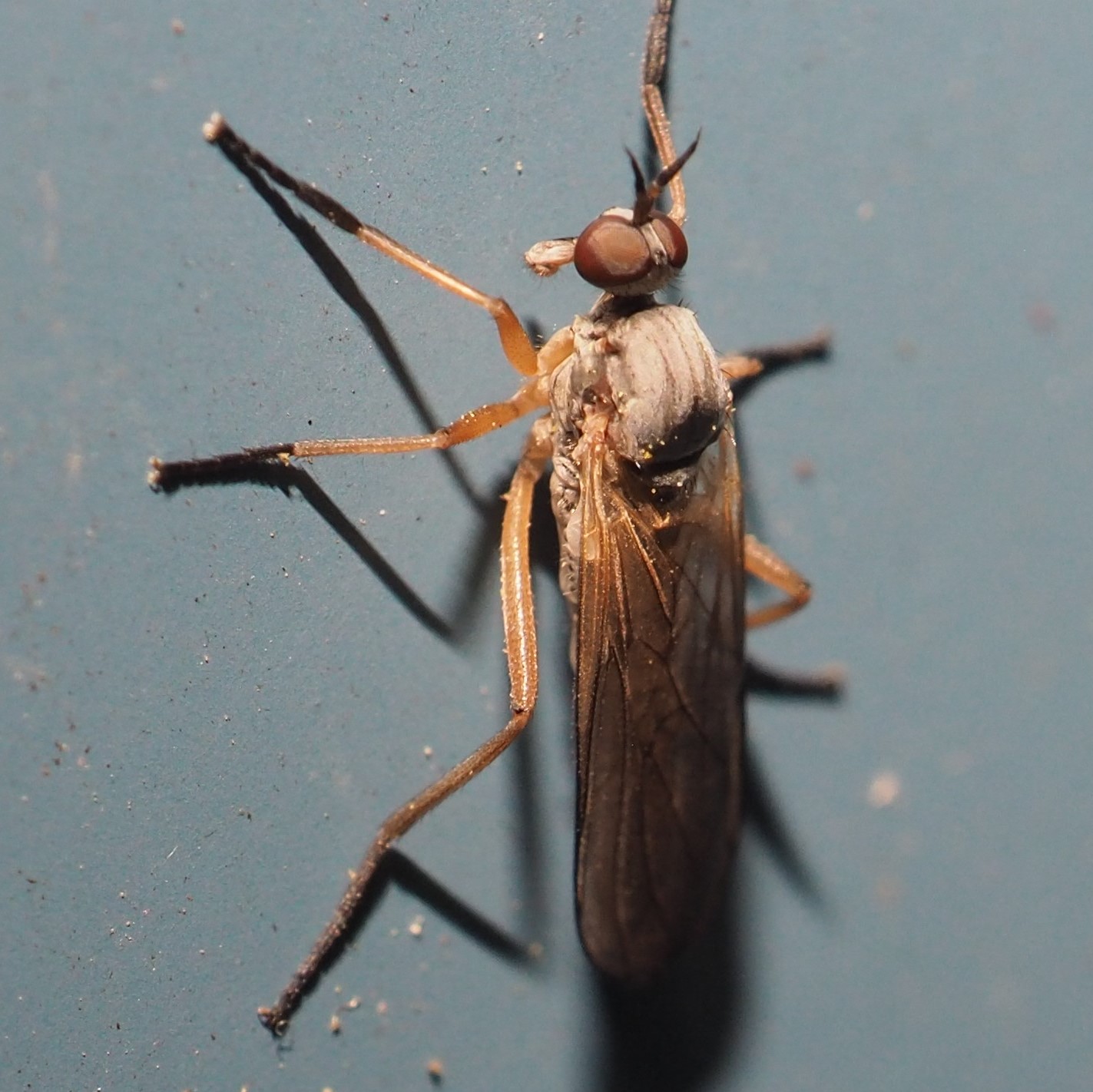
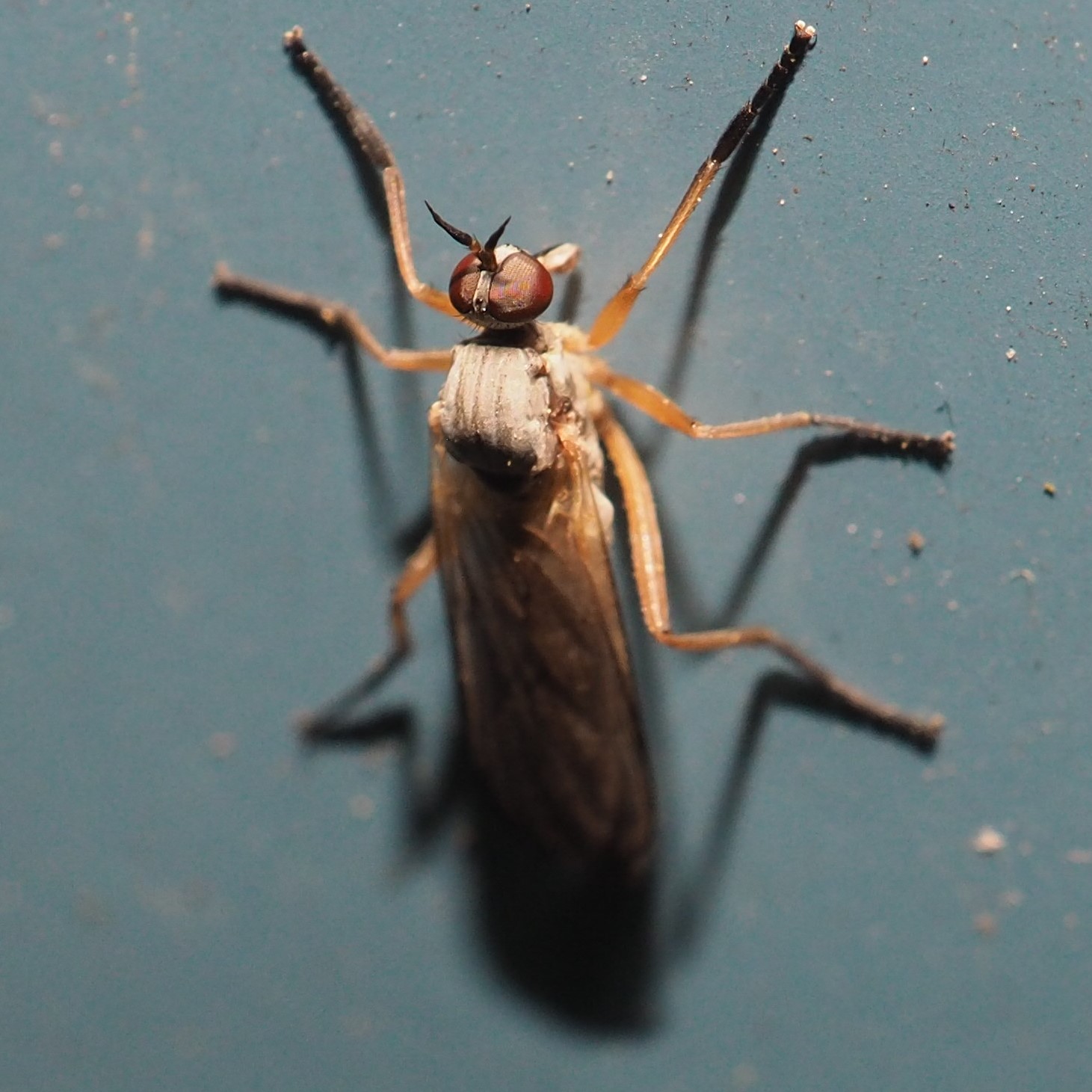
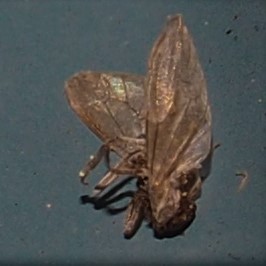
I think these Flies with the yellow wing-lining are Root-Maggot Flies. If you think that isn't right, please tell me.

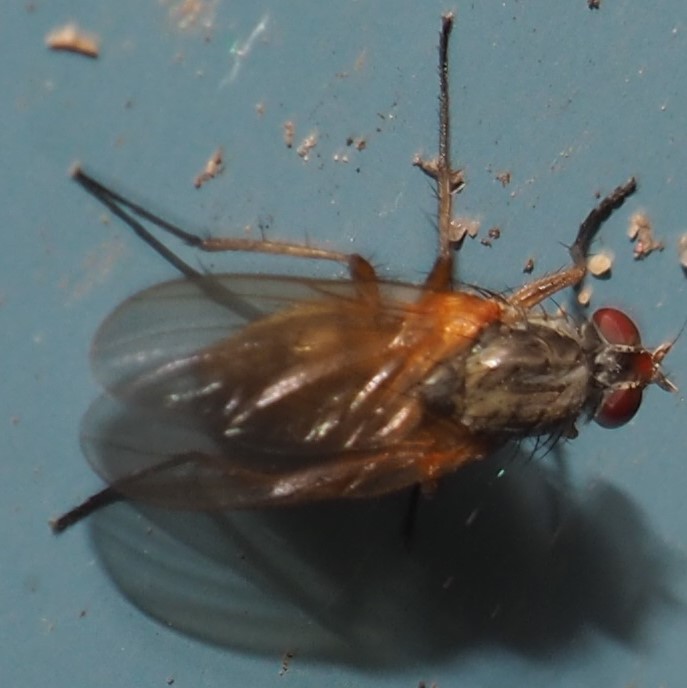
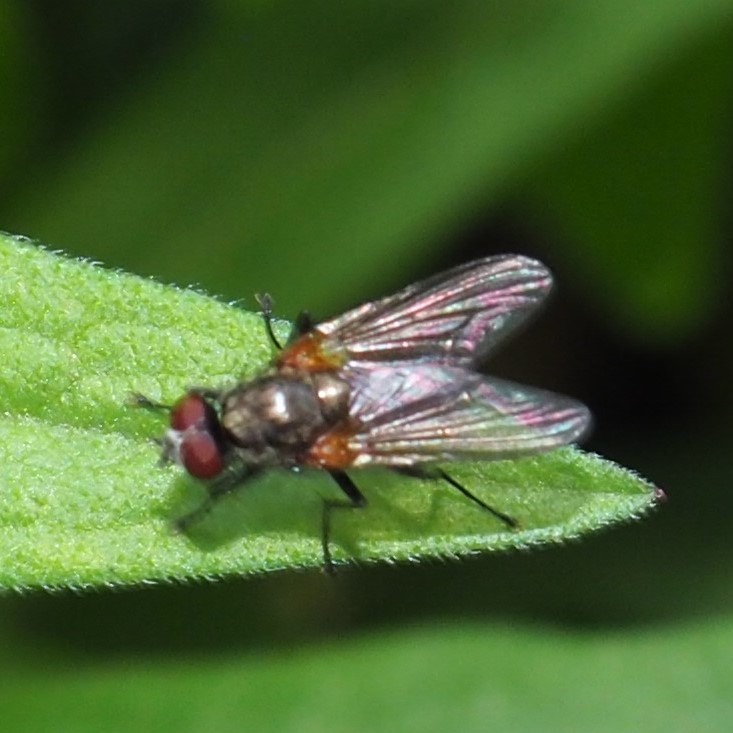
It's time for the Common Snipe Flies to gather these days. They are even more obvious than the Gypsy-moth caterpillars were last week. Picture 3 shows a pair mating.
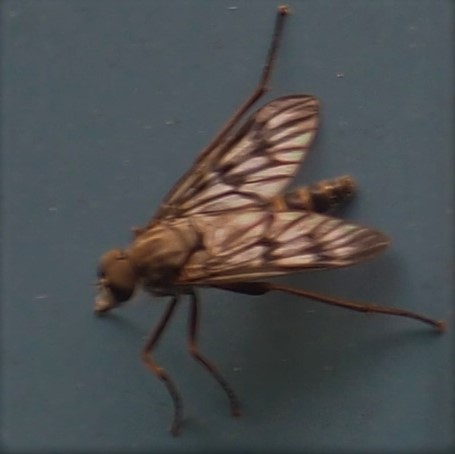
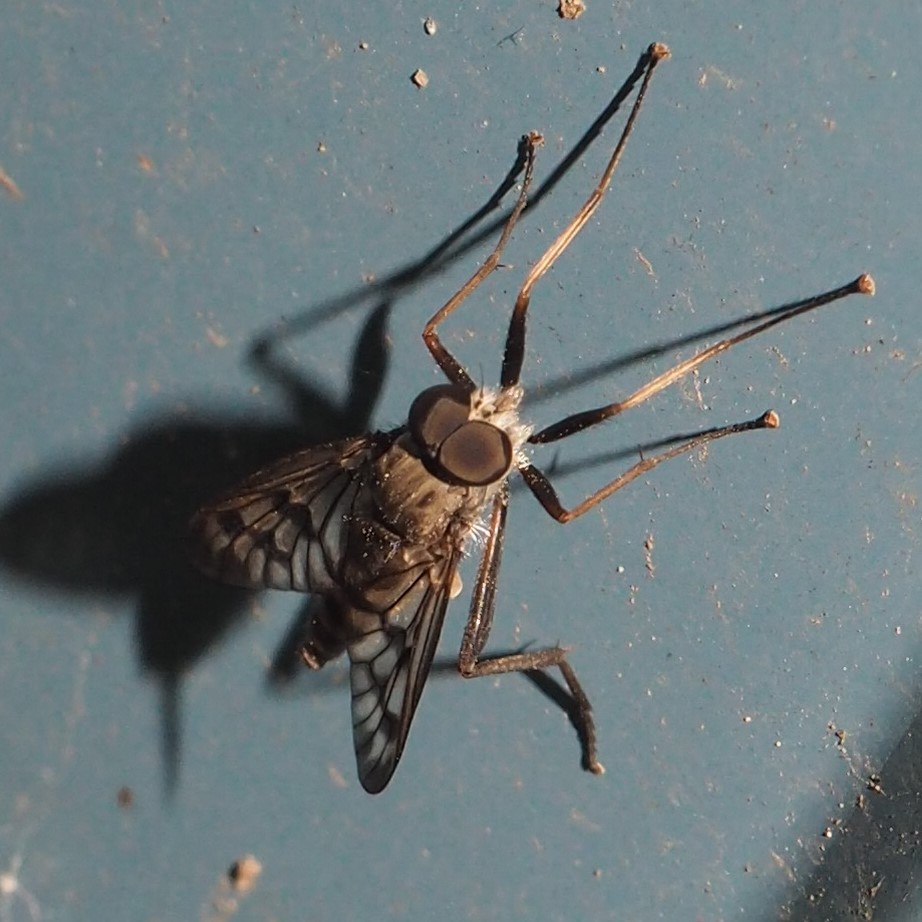

Here are a few more Flies: first a tiny but very pretty little Fly; then a lovely Moth Fly; and last a yellowish Midge.
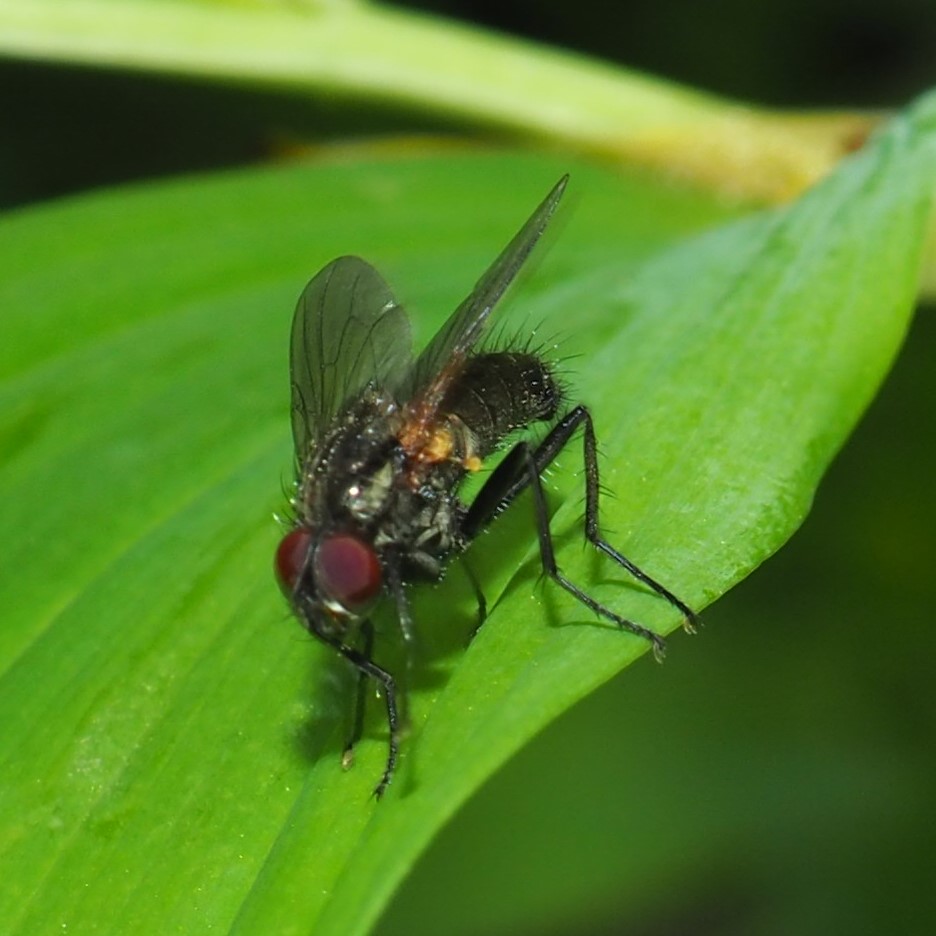
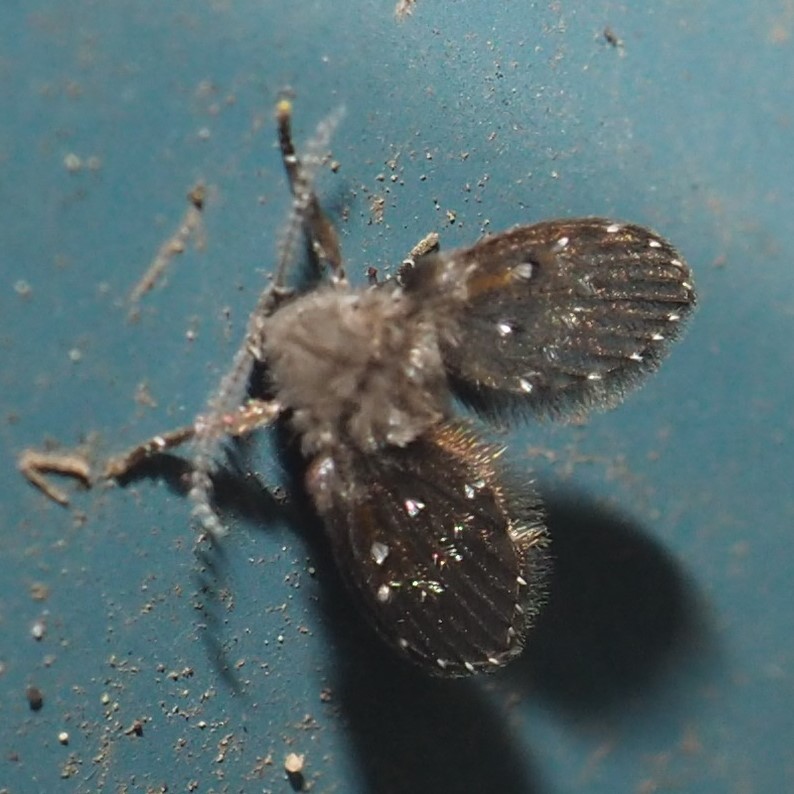
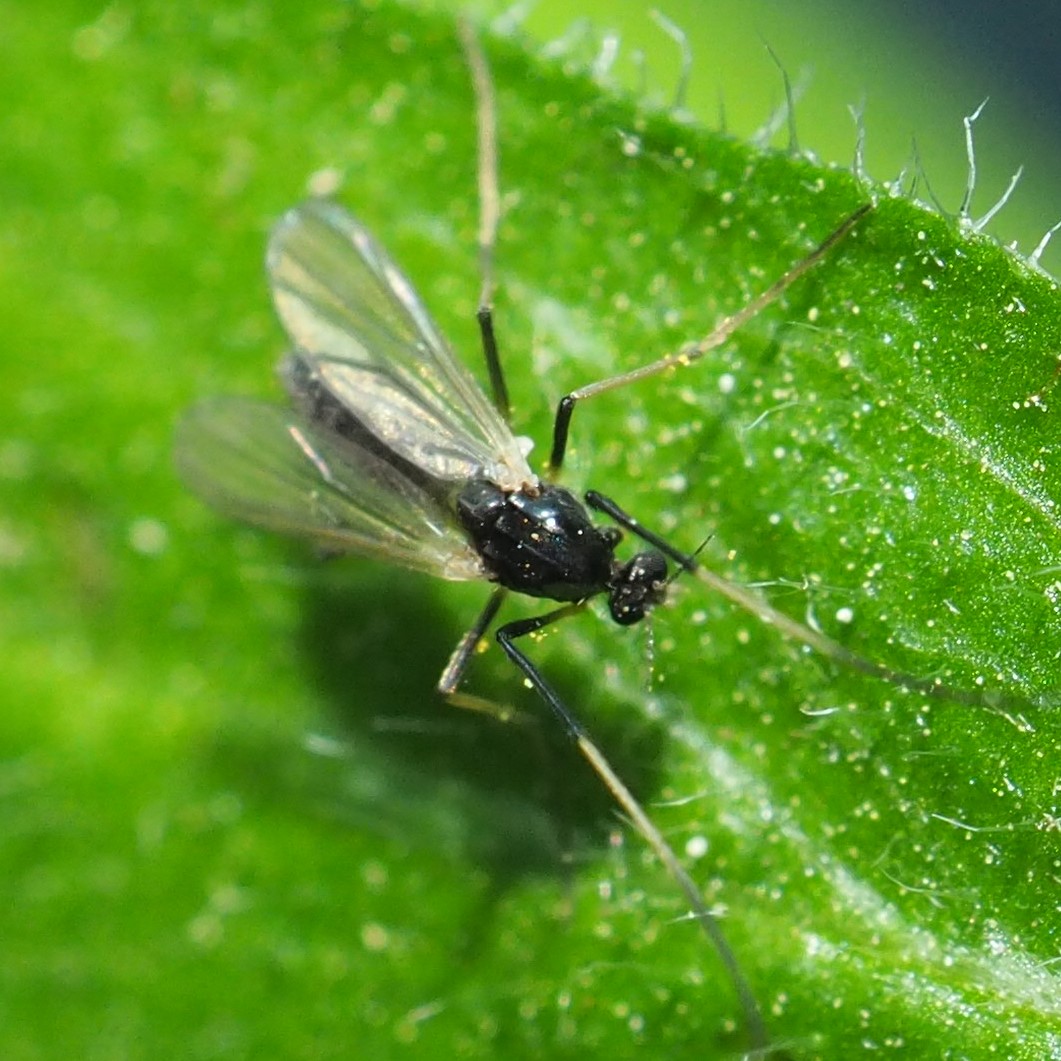
Oh. When I skipped the non-existent pictures of the Pond, I forgot that the brickwork in the front porch has had for several days a tiny little yellowish-green Tree Frog. This is a member of the Eastern Grey Tree Frog complex. This or several that look like this one were seen over three days...
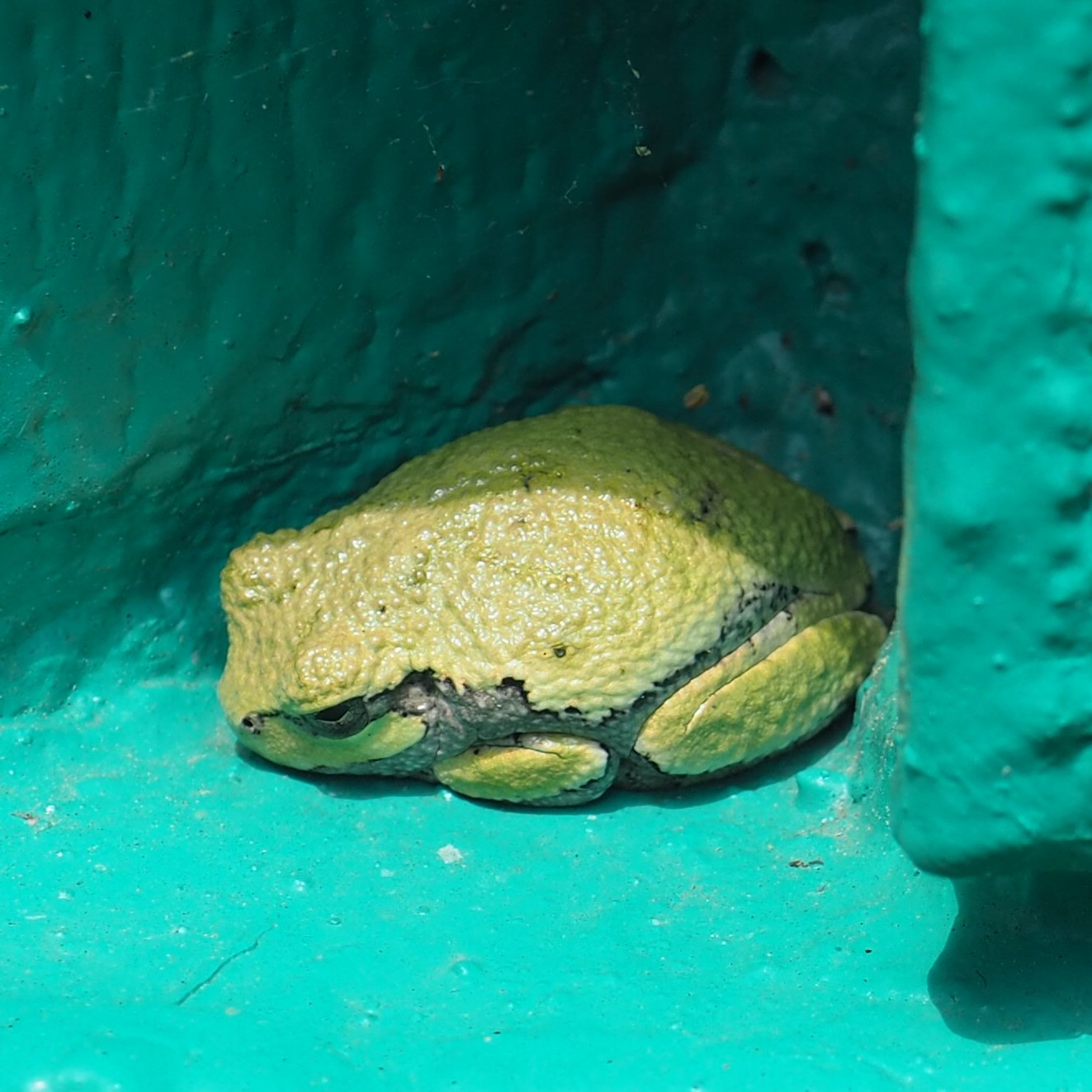

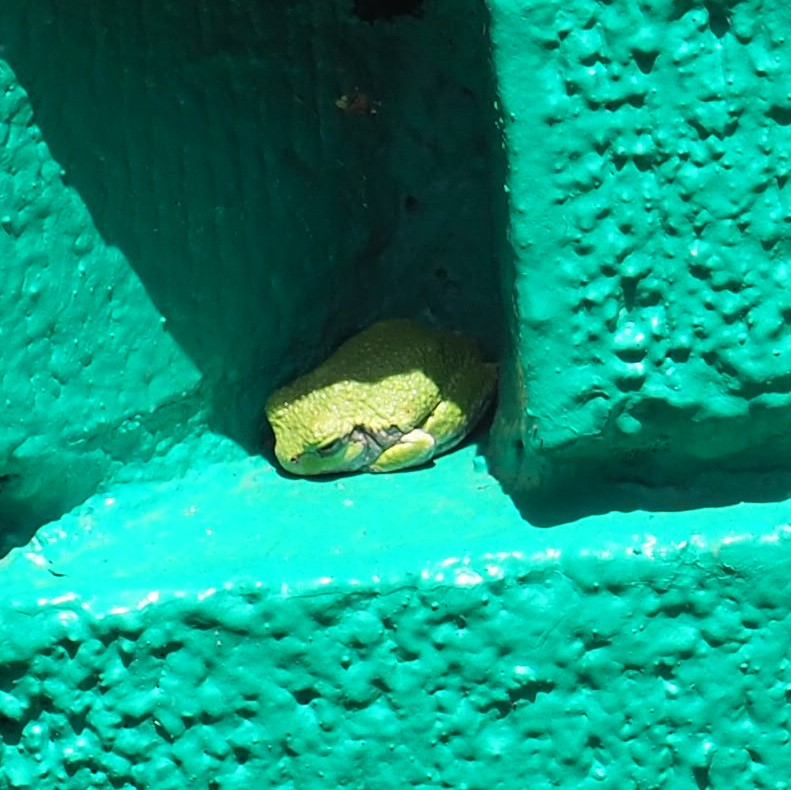
Let's take a look at the Moths and Caterpillars thereof before taking our usual walk through the flowers. There have been a number of TINY Moths lately. First is a Norway Maple Pygmy Moth, one of the Pygmy Eye-cap Moths. Then another tiny moth; and third, one of the Leaf-miner Moths, probably of genus Phyllonorycter.
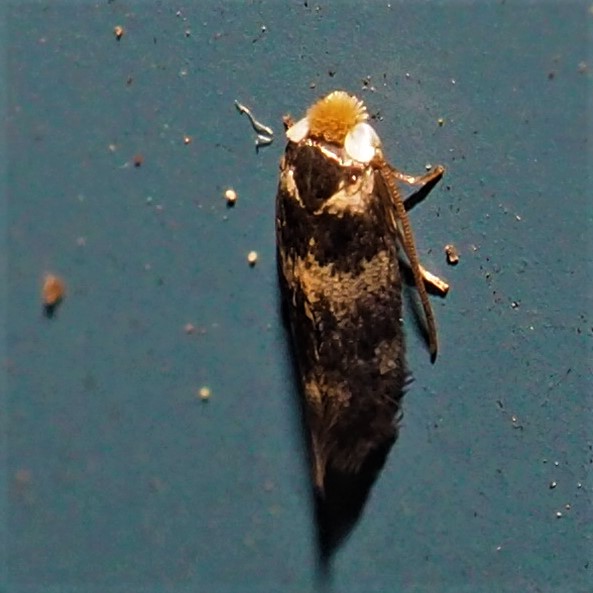

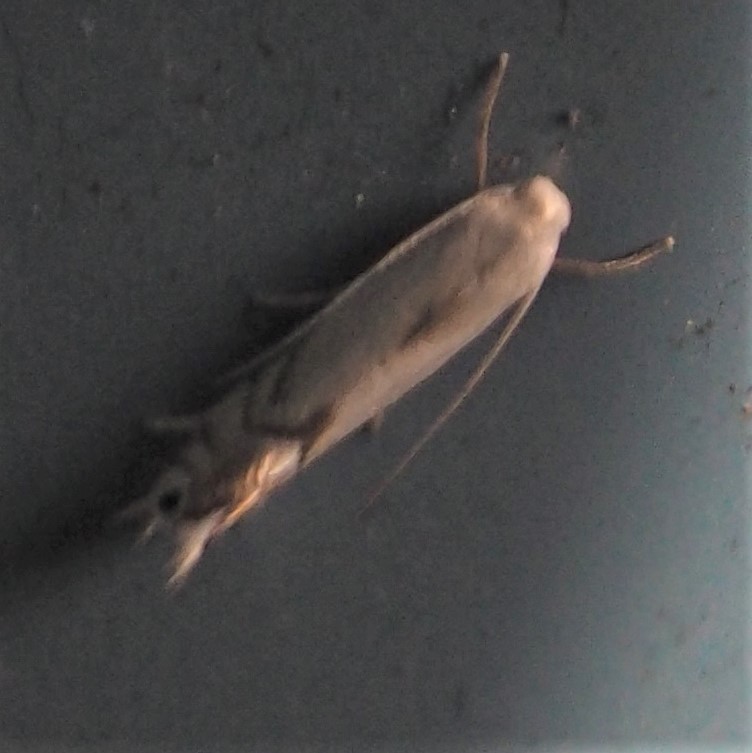
There were some pretty Caterpillars this week, mostly walking on the sidewalk. This first one is the caterpillar of the American Copper Underwing. Second is the caterpillar of the Bicolored Sallow. @k8thegr8 is the mayvin who knows caterpillars best of anyone I know. Thanks @K8! Third is probably one of the Cutworms. It is much smaller than the other two Caterpillars.
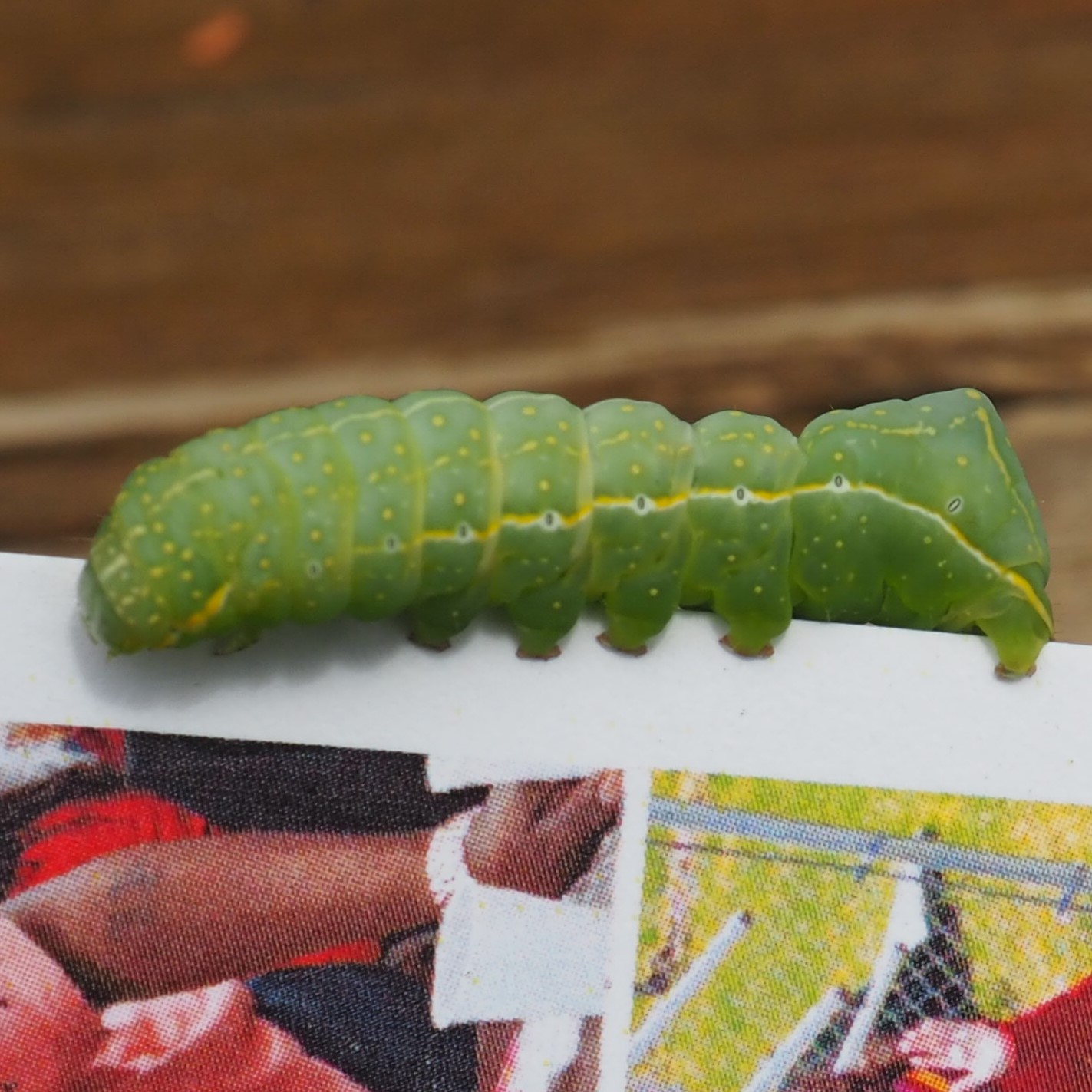
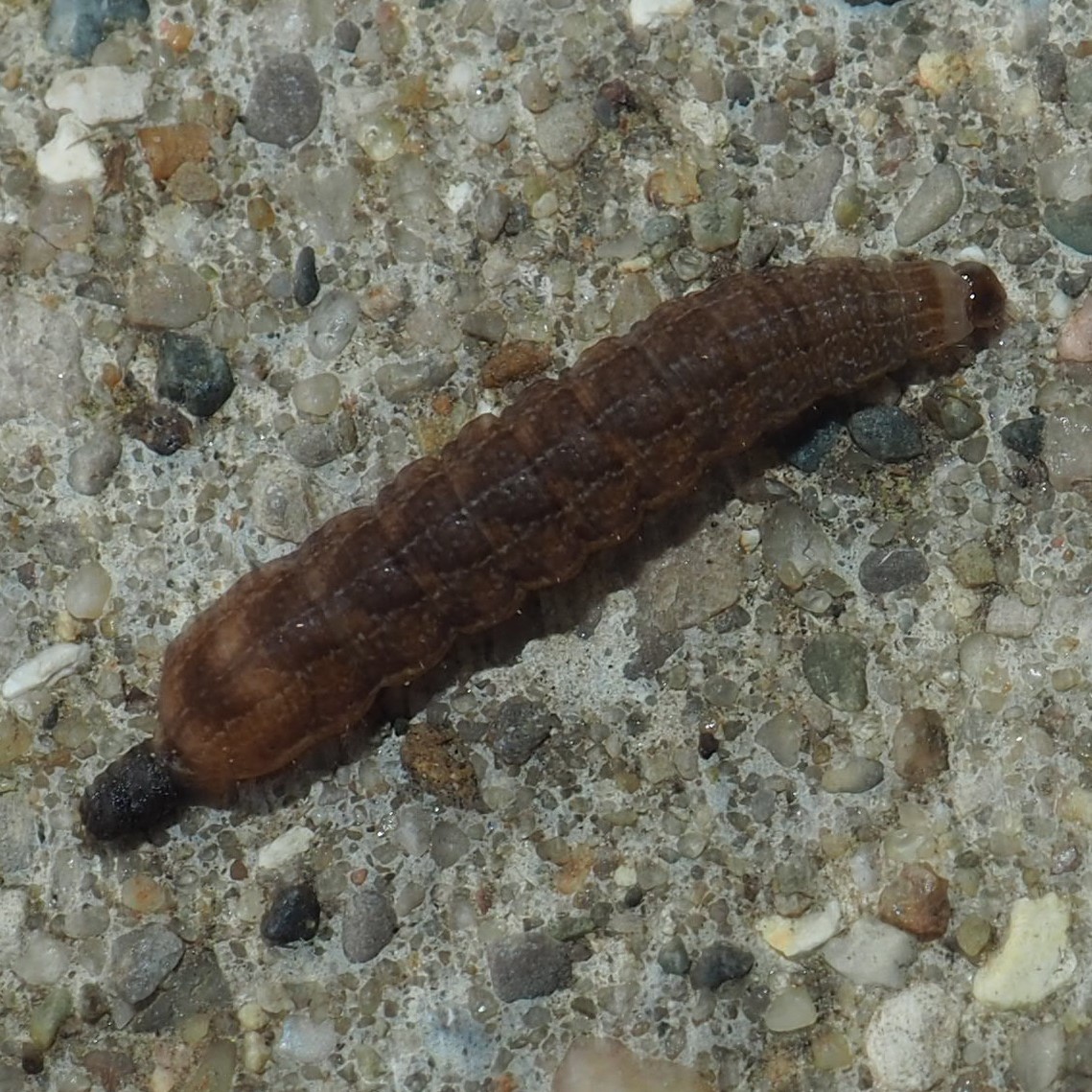
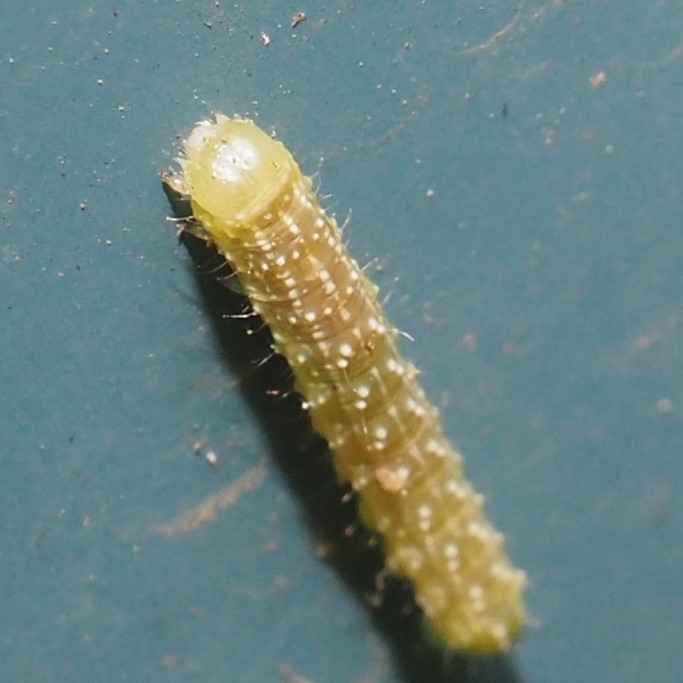
Let's go for a color walk. Here are the pinks - their third year in a deck box. Just starting out for this year. The Celandine Poppies are dwindling, but here's a pretty one. Third is a Cranesbill Geranium blossom.
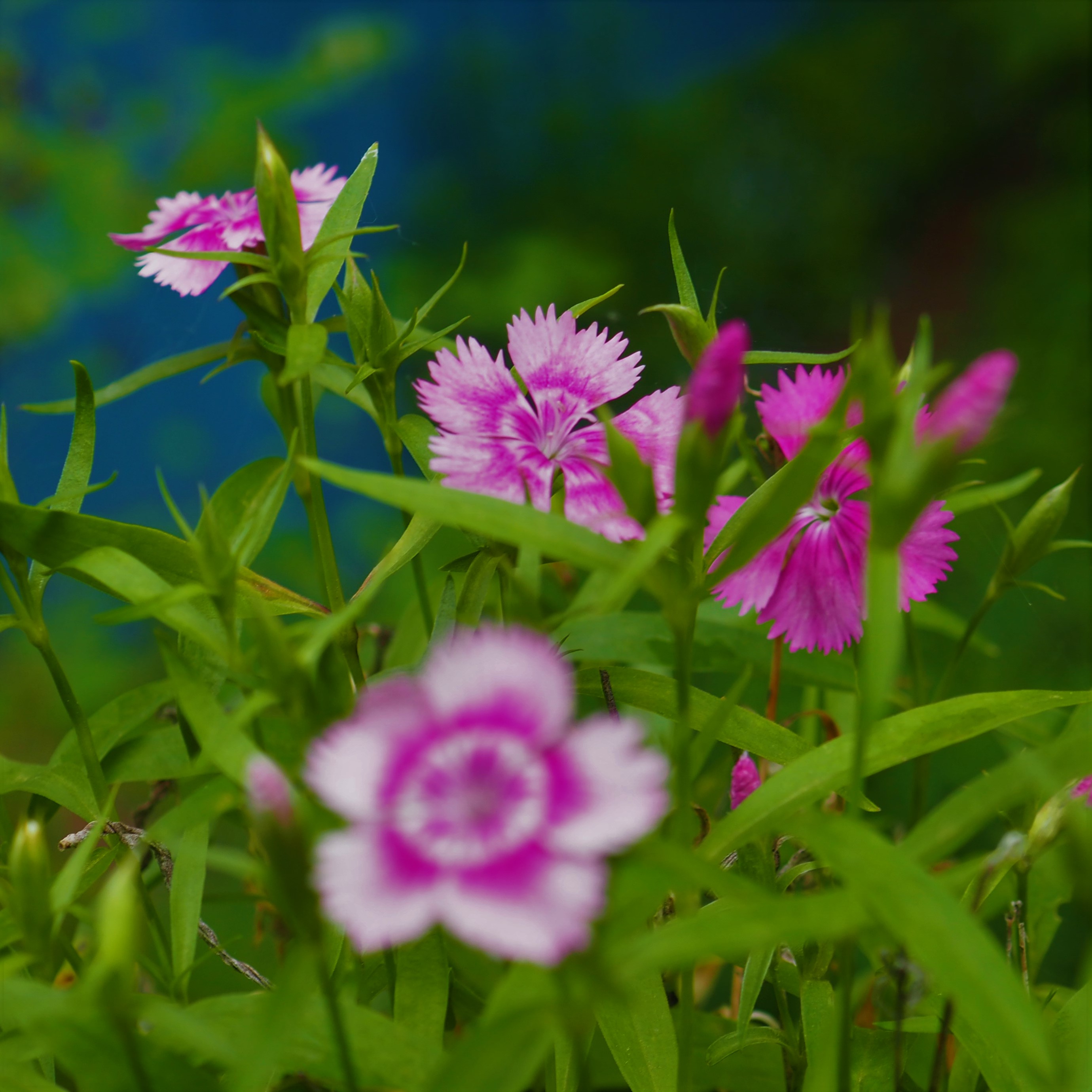
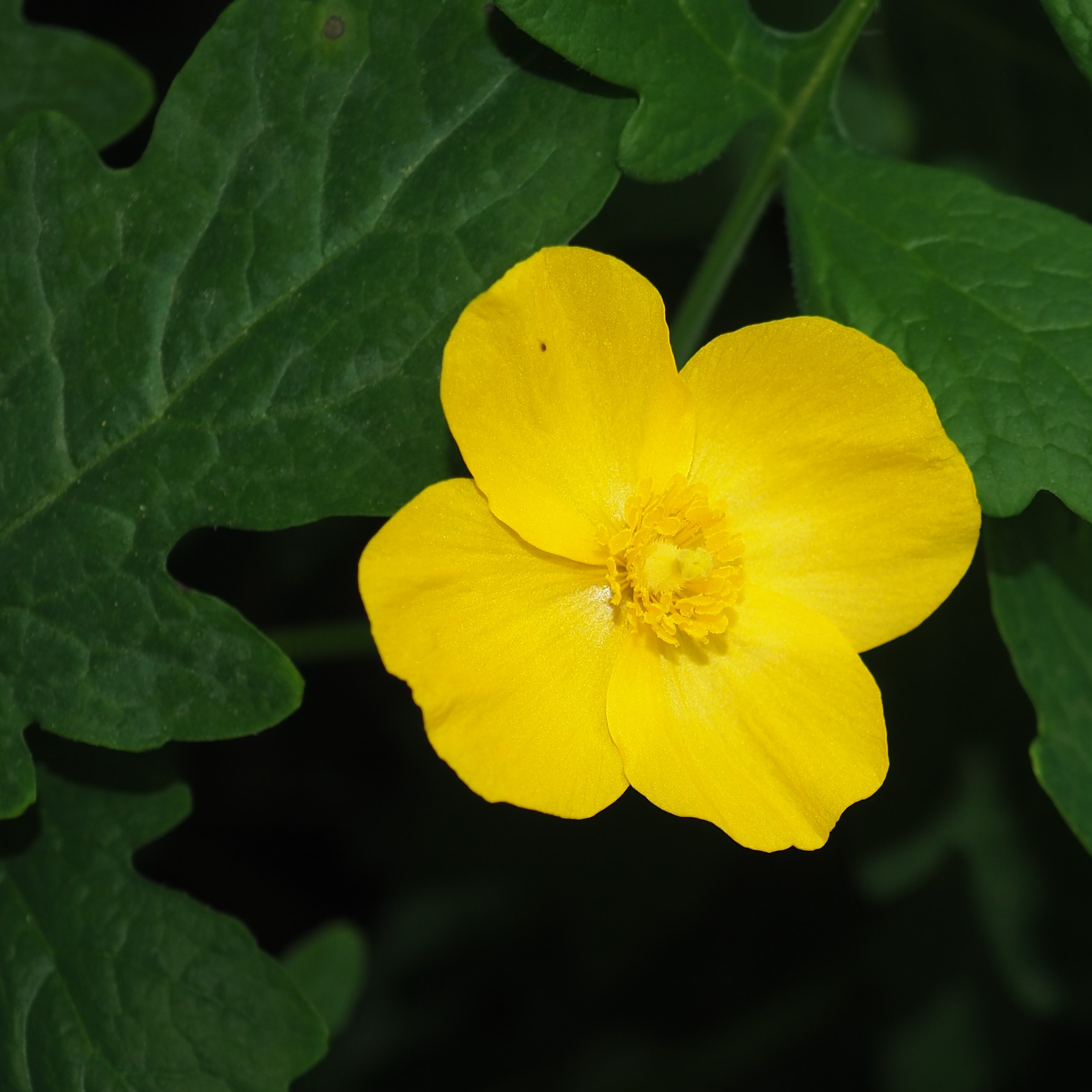

The Baptisia is only just budding, but will be a lovely blue soon. Next is the Columbine that I used for the opening flower portraits. Last is the Dame's Rocket.
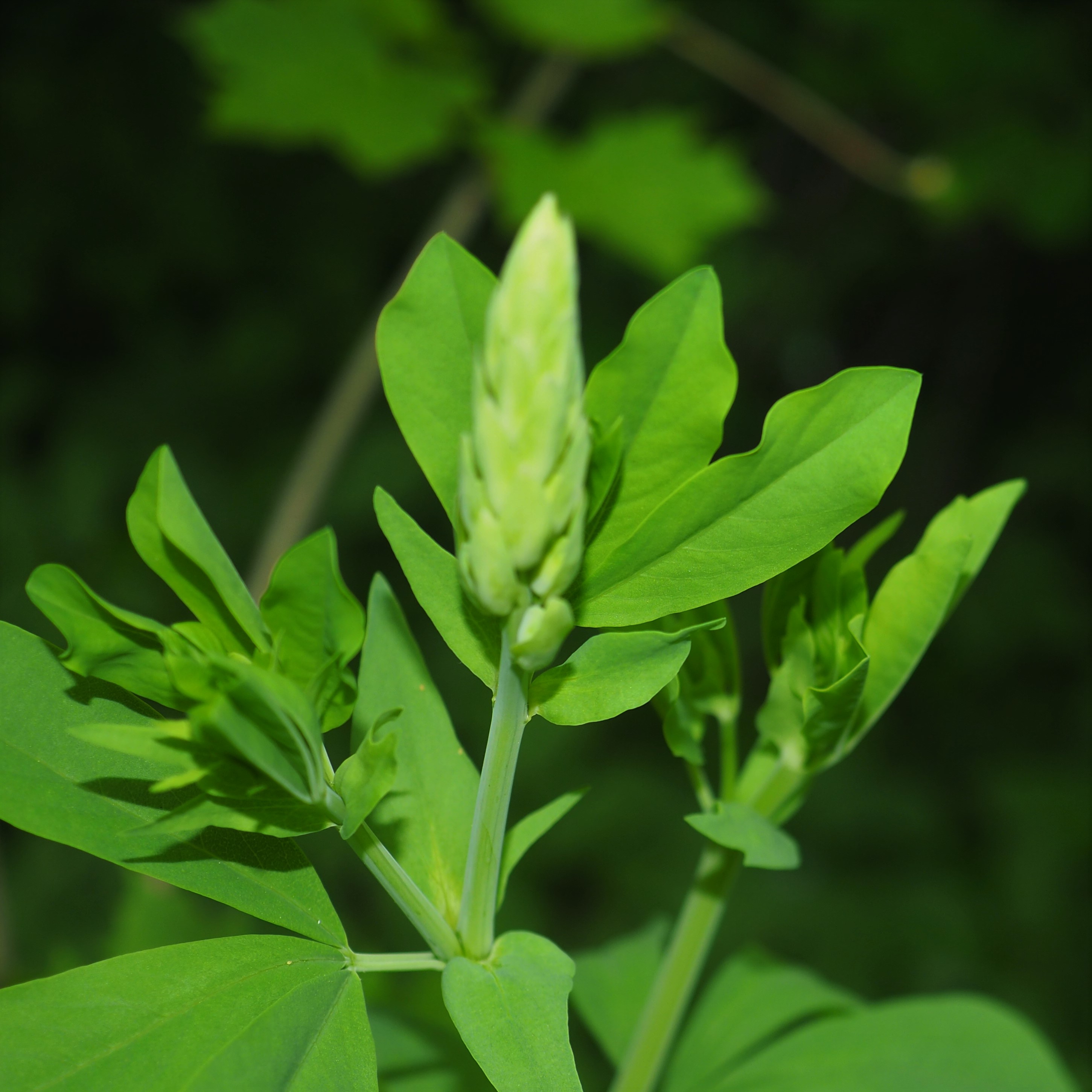


The Dandelion again; Deb's Weeping Cherry Blossoms; a single Ranunculus ("buttercup") blossom.


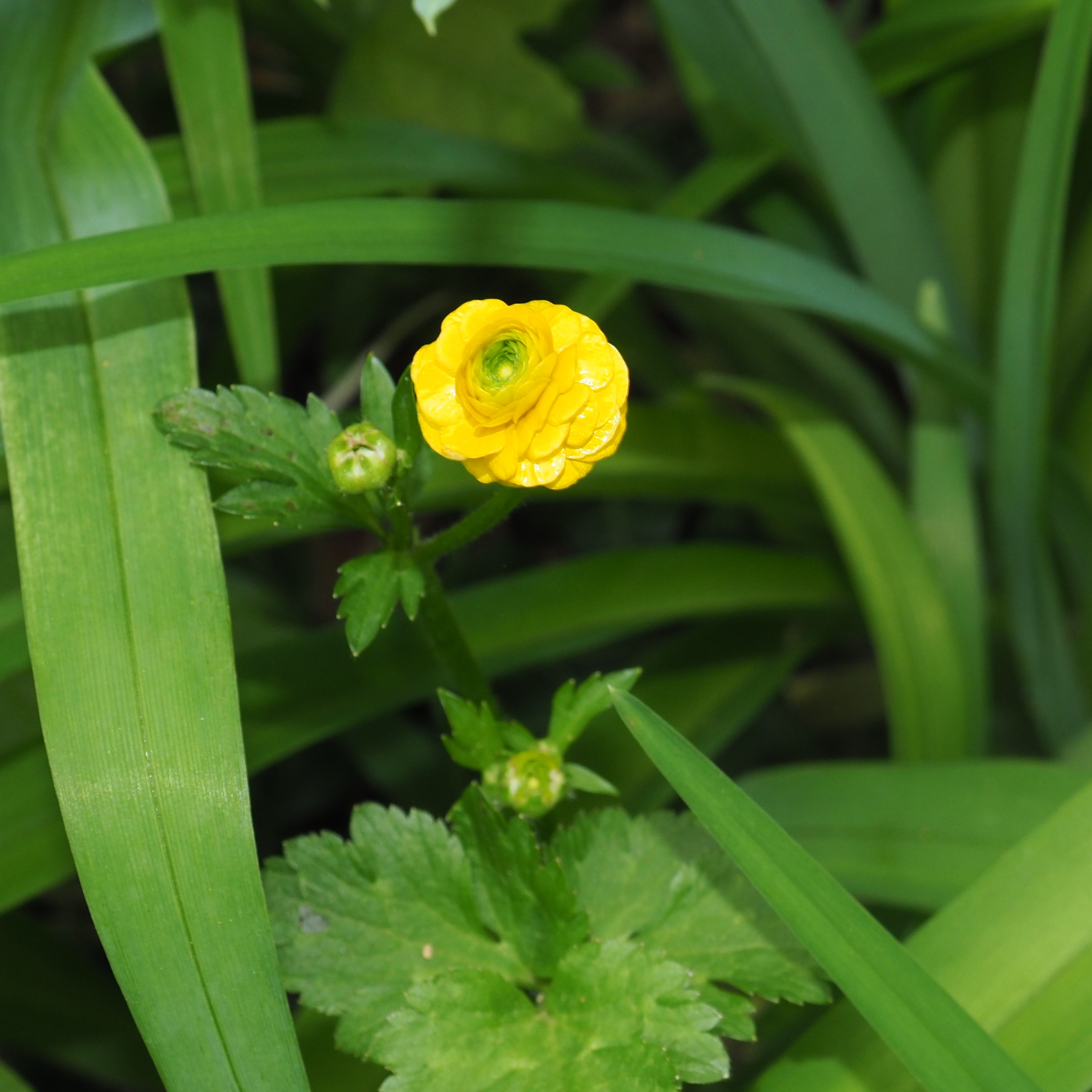
I'd better get the berry basket ready - these are Black Raspberry flowers. Second is that tall yellow and green Tulip with the Wild Geraniums. Third shows some of the Trillium plants that I rescued from the back yard (now growing in the dark next to the front porch).
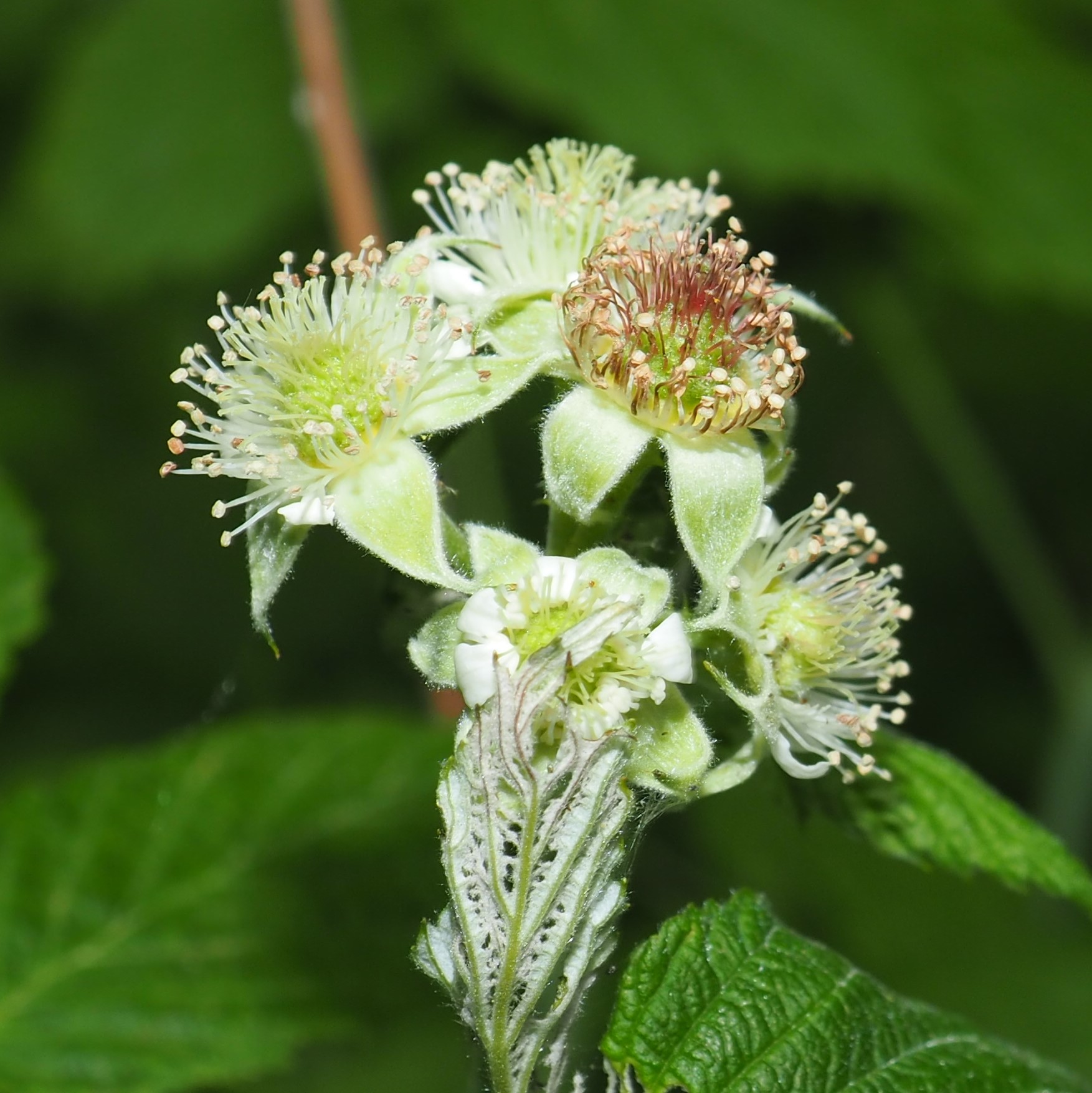

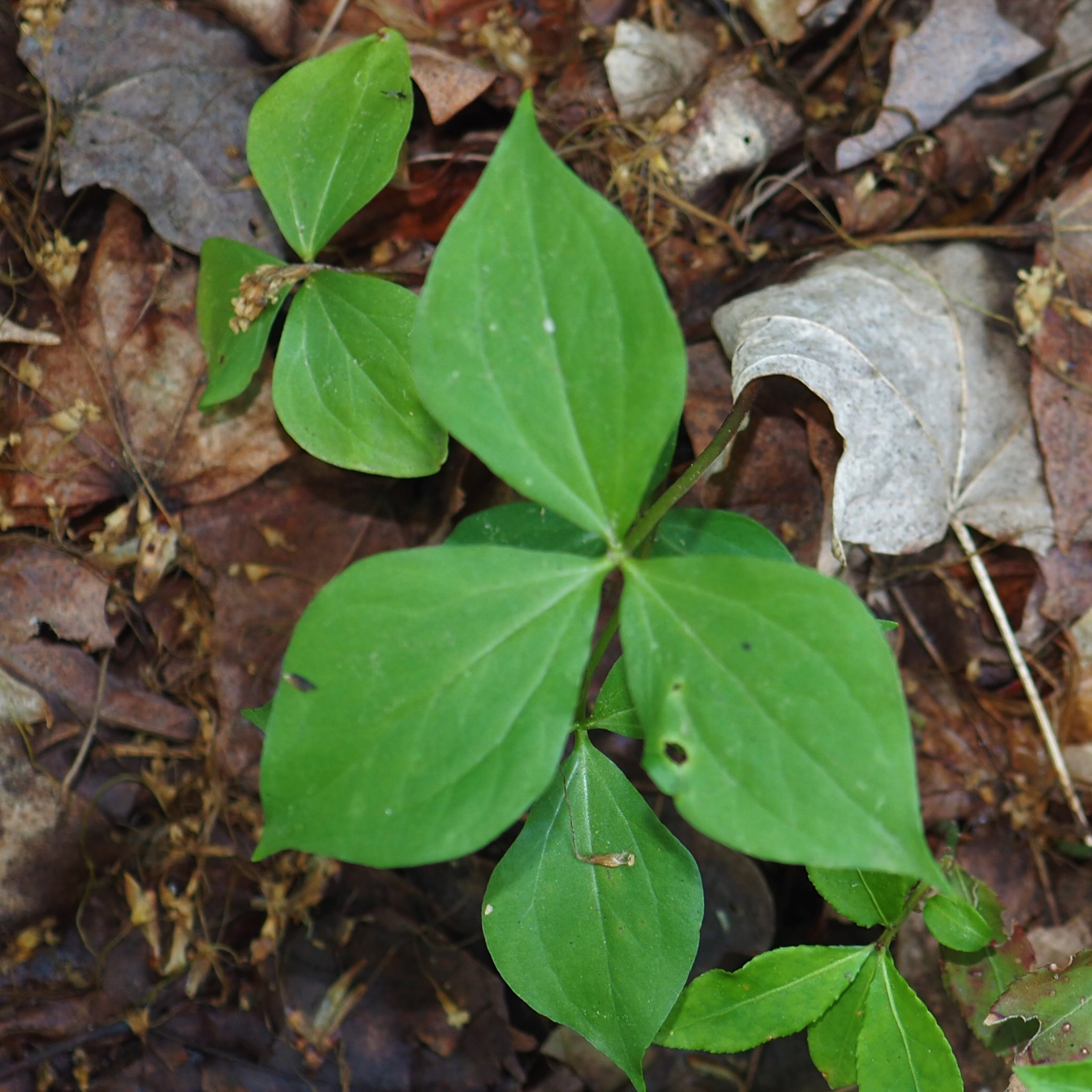
We now come to the Spiders! This was a good week for variety! Of course, for sheer numbers, most of the Spiders I've been seeing are Cobweb Spiders. And most of the Cobwebbers have been Common House Spiders, like number 1 here. Picture 2 shows some of the balance of Power among wild animals. The spider is able to conquer that huge Eastern Black Carpenter Ant! And Number 3 shows a Cobweb Spider that has just wrapped up a Gypsy Moth Caterpillar.
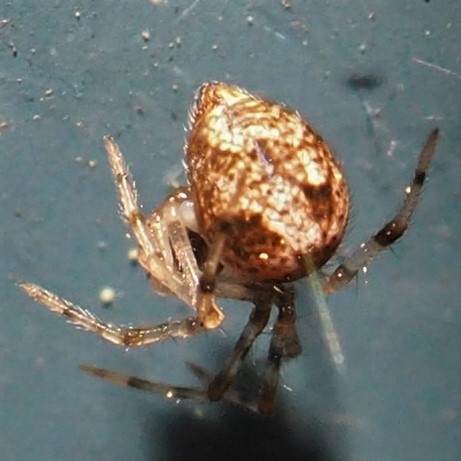
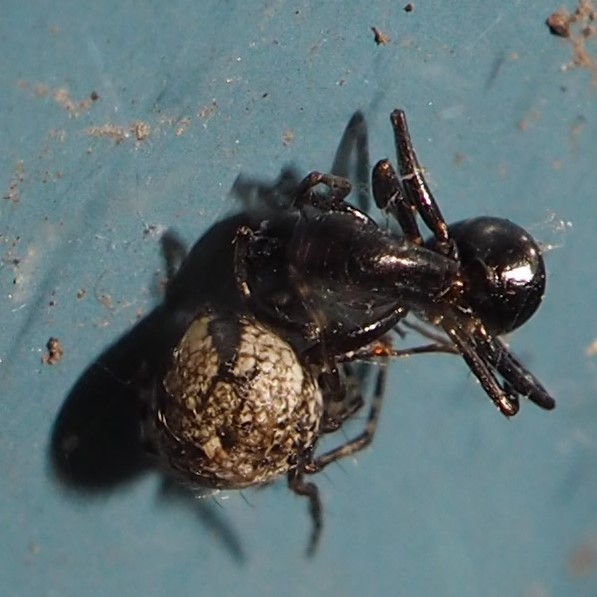

Here, on the other hand, is a Wasp who lives by eating Spiders attacking a huge Ground Crab Spider. In this montage, the Wasp has caught the Spider and dragged it around on the South Wall and across a window screen. The Spider seems to have relinquished the fight.
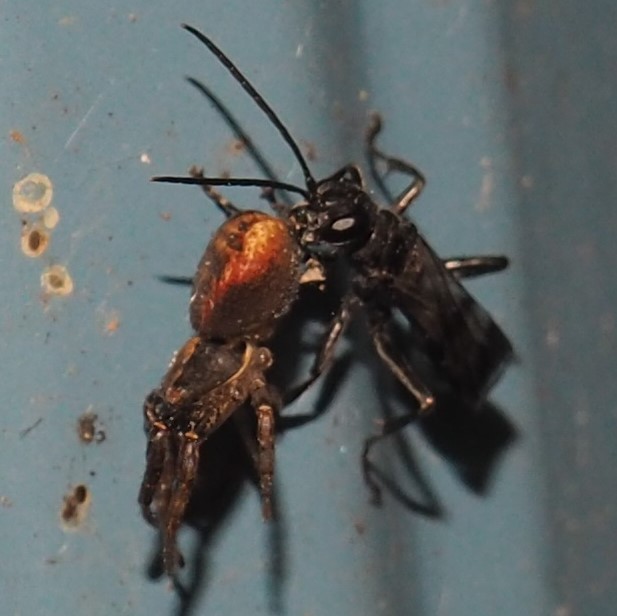
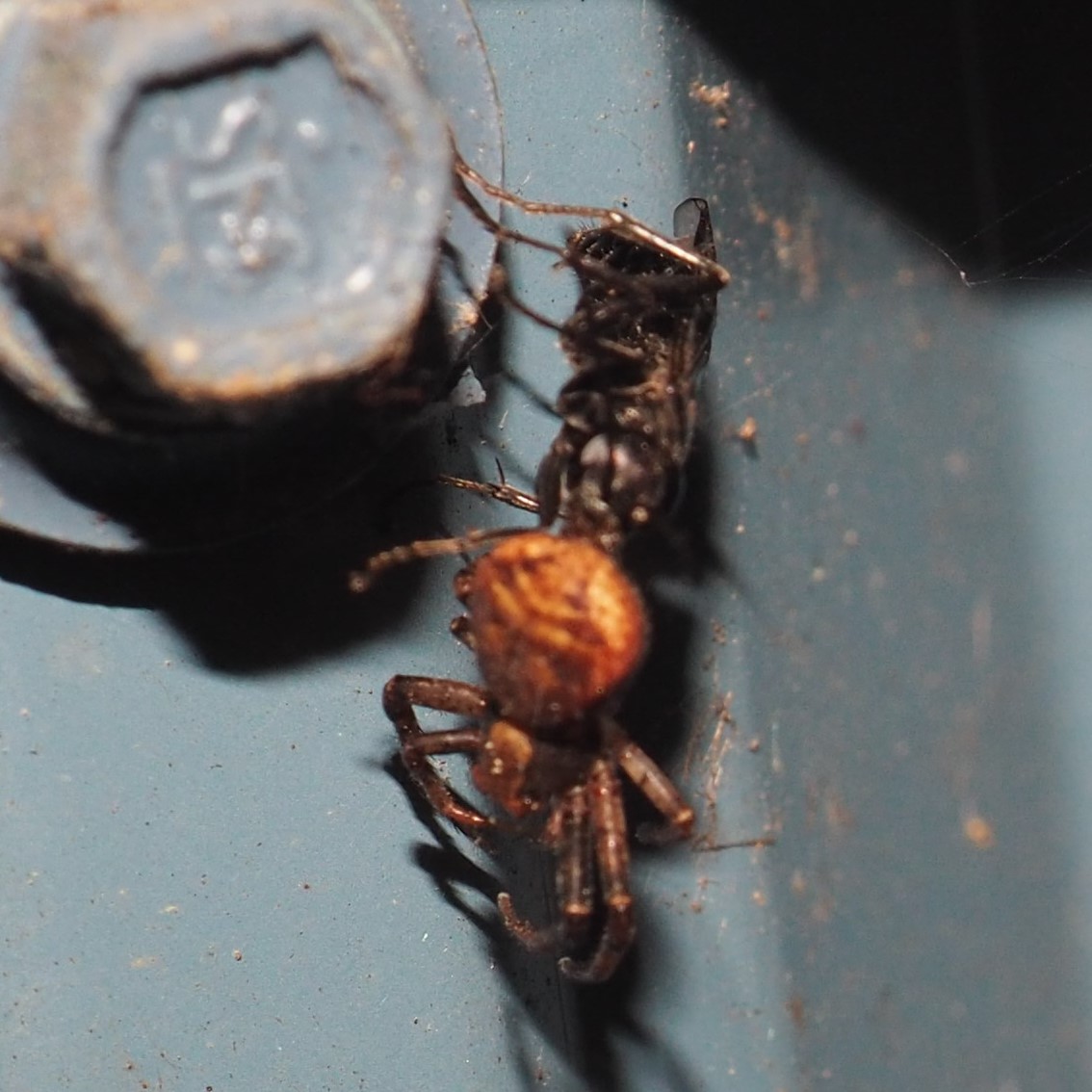
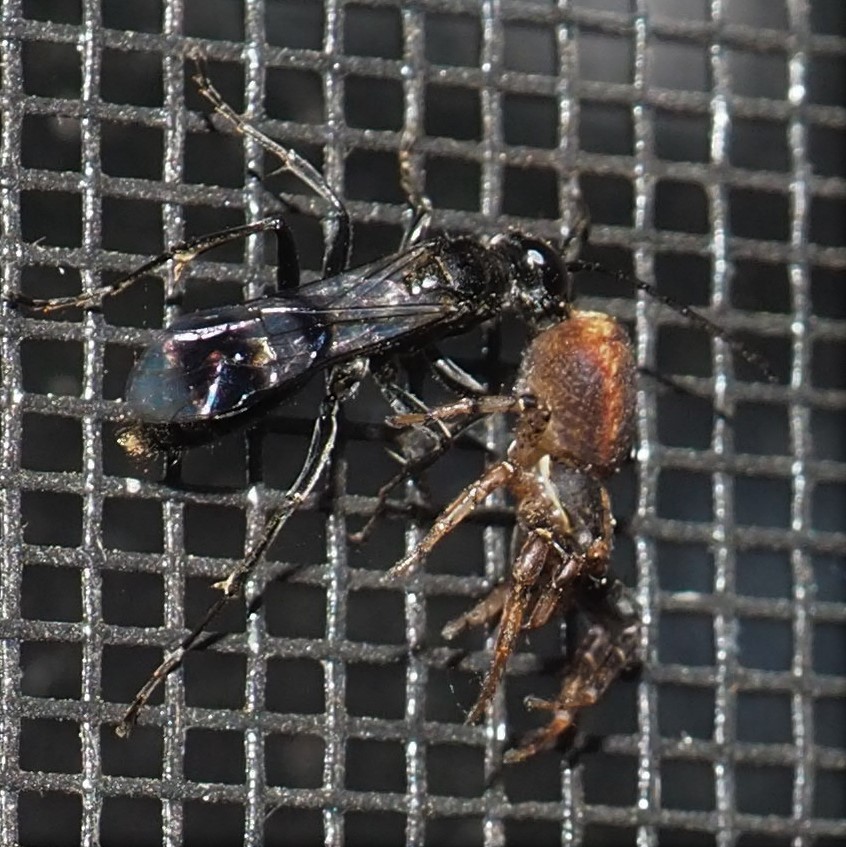
Here is the Euryopis funebris Spider again (back from last week). Next is a Garden Ghost Spider. Finally, the Common Pirate Spiders, Mimetus puritanus. These are one of my favorite Spiders because of their face - you can see this one's large white grin.
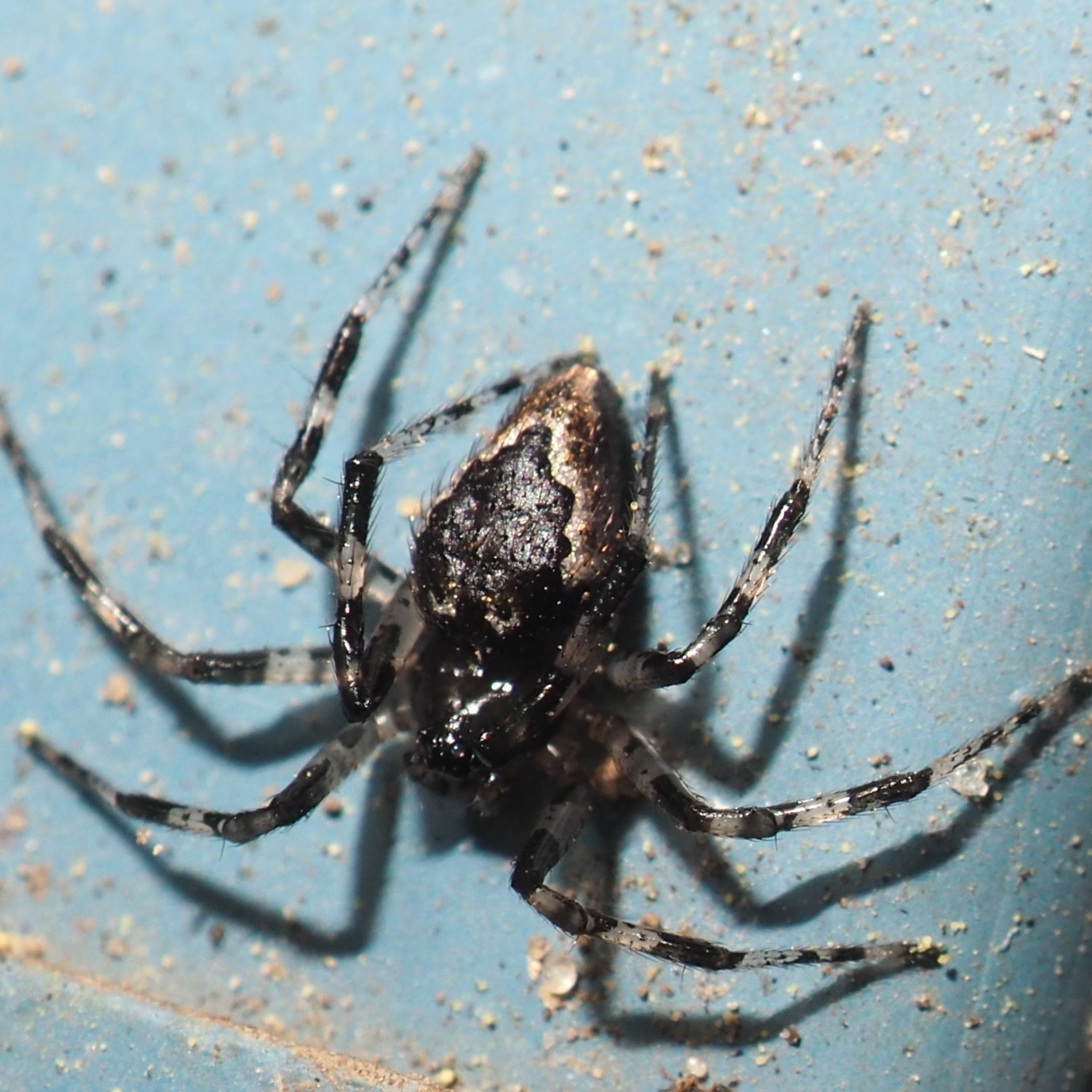
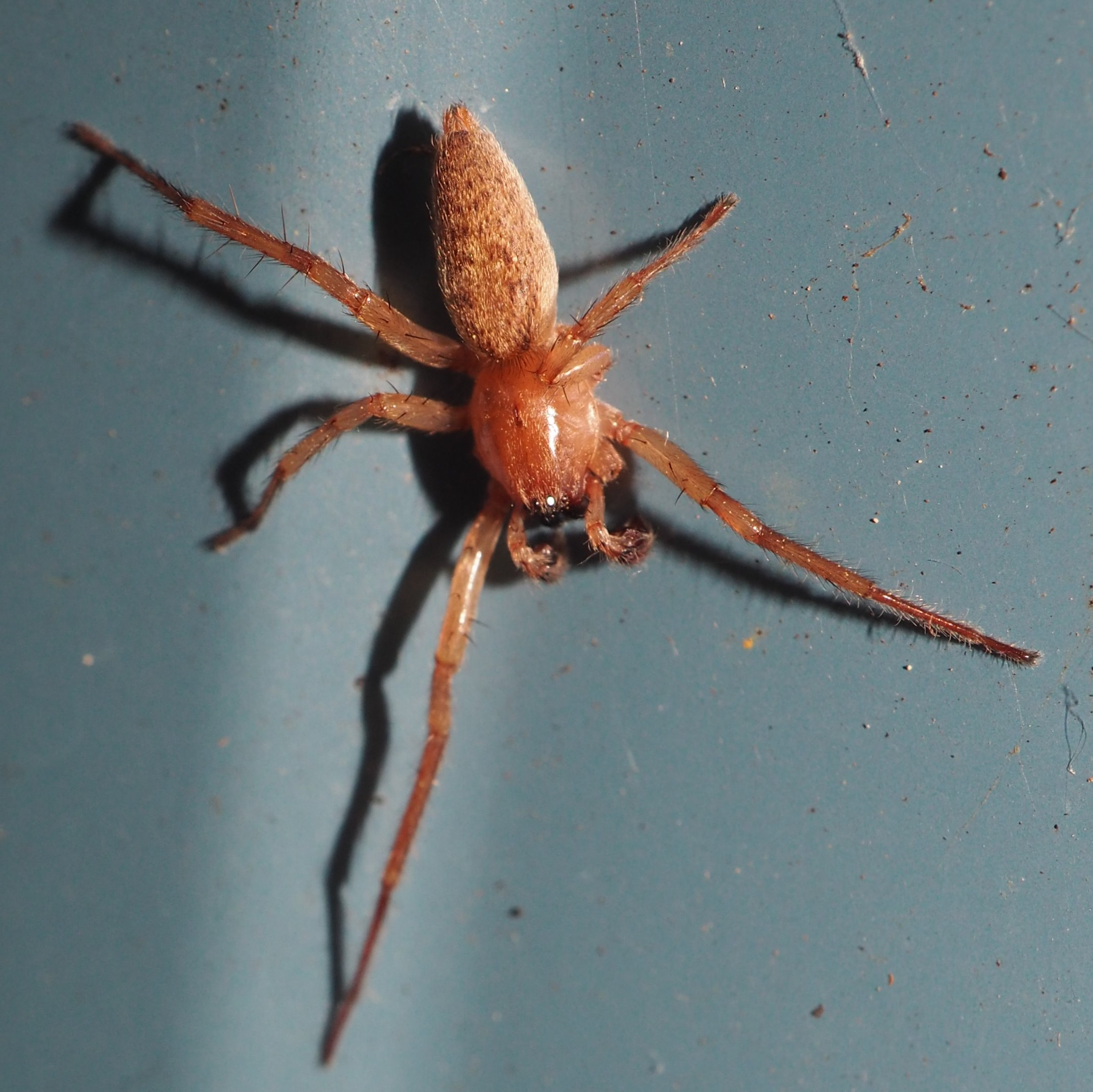
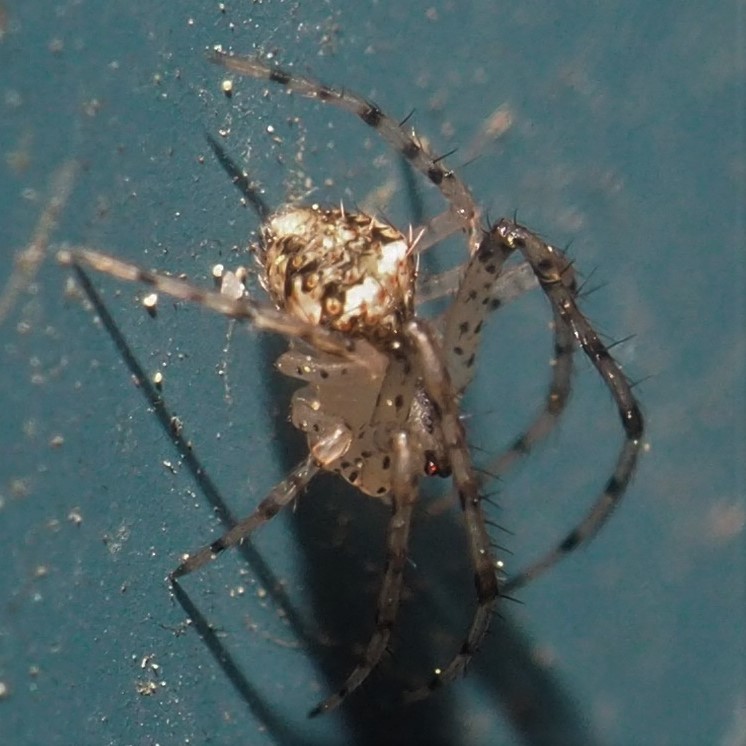
The large Crab Spiders are very difficult to ID to species. But this one was ID'd tentatively as the Brotherly Ground Crab Spider (Xysticus fraternus) by Jeremy Hussell. We decided not to push this ID and I left it as genus Xysticus!

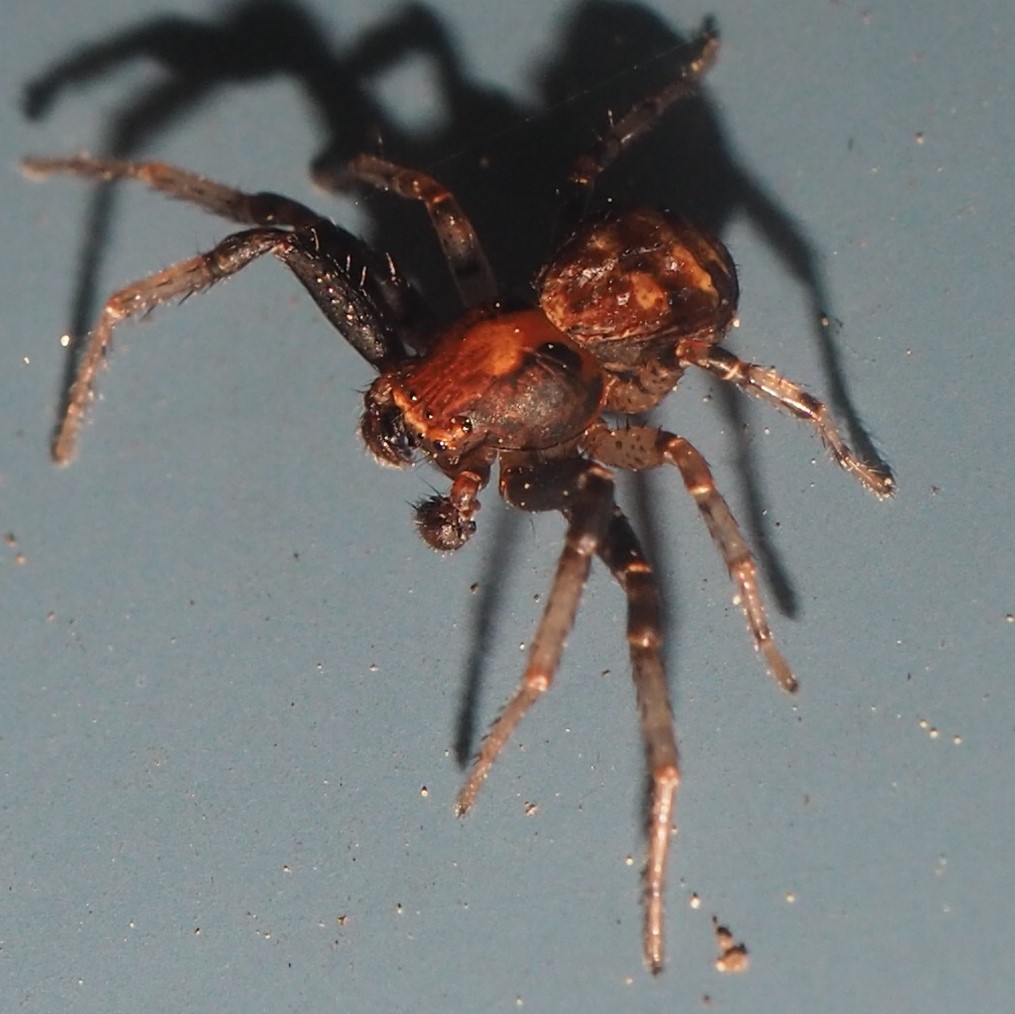
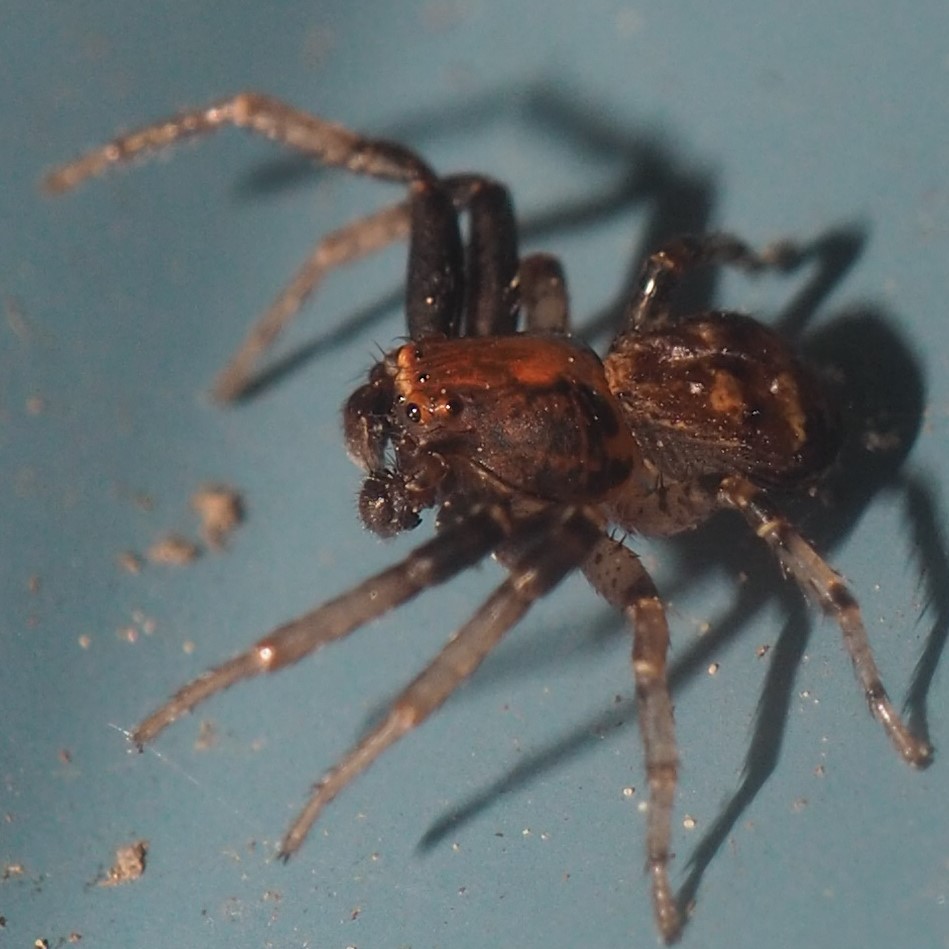
Here is another large Crab Spider, perhaps in genus Bassaniana.
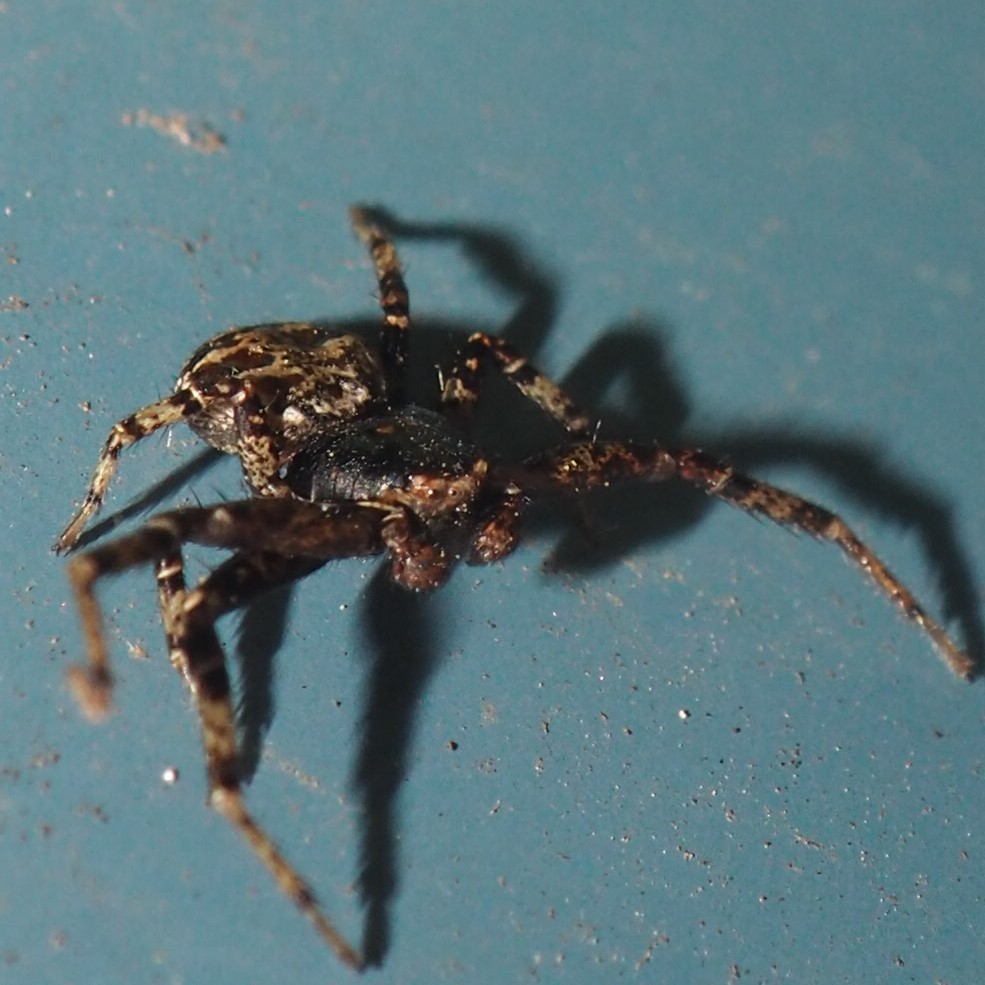

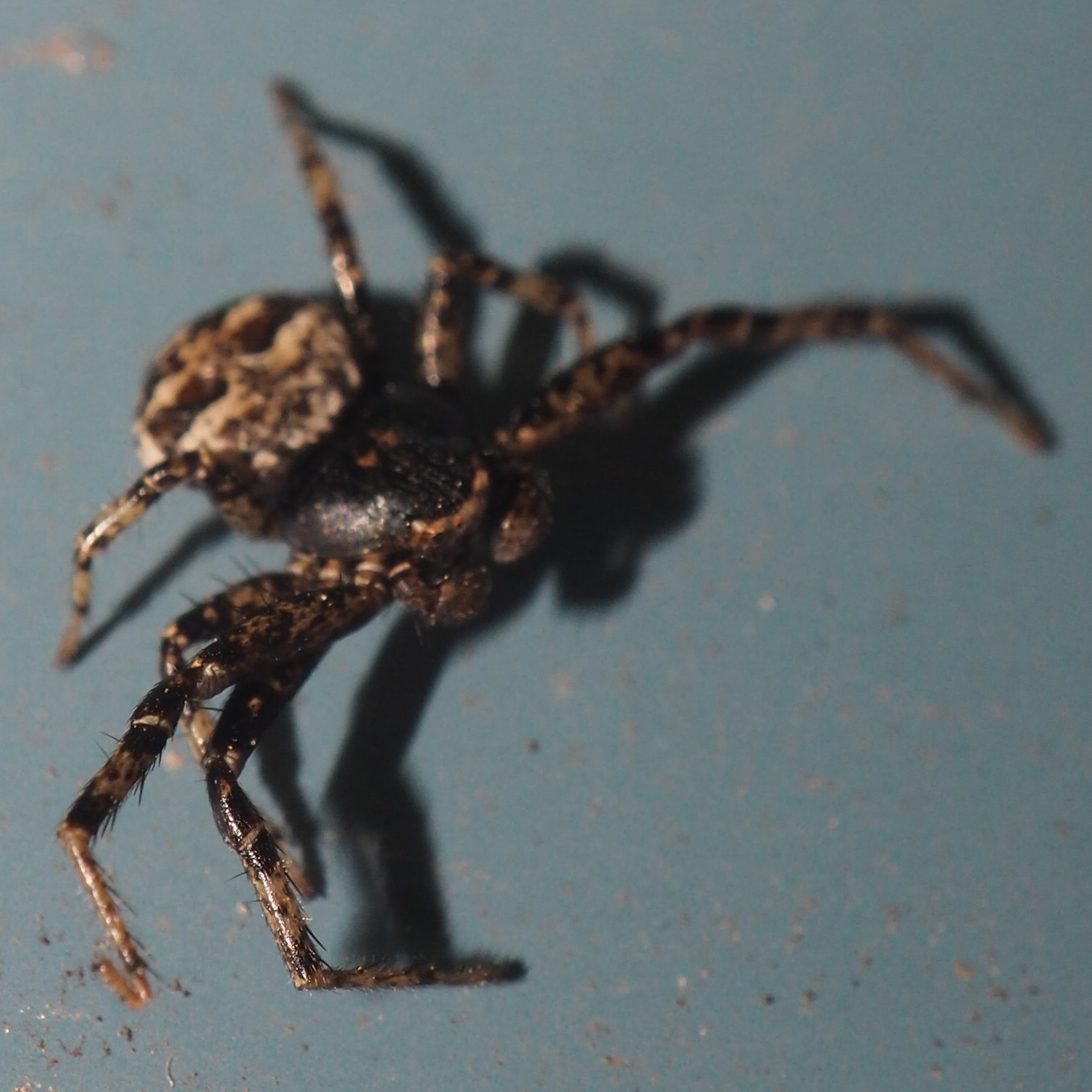
This delicate Crab Spider is the Northern Crab Spider, identified by Nick Block (first two pictures). Third is a little Spider concentrating on catching the Assassin Bug at the top of the picture.
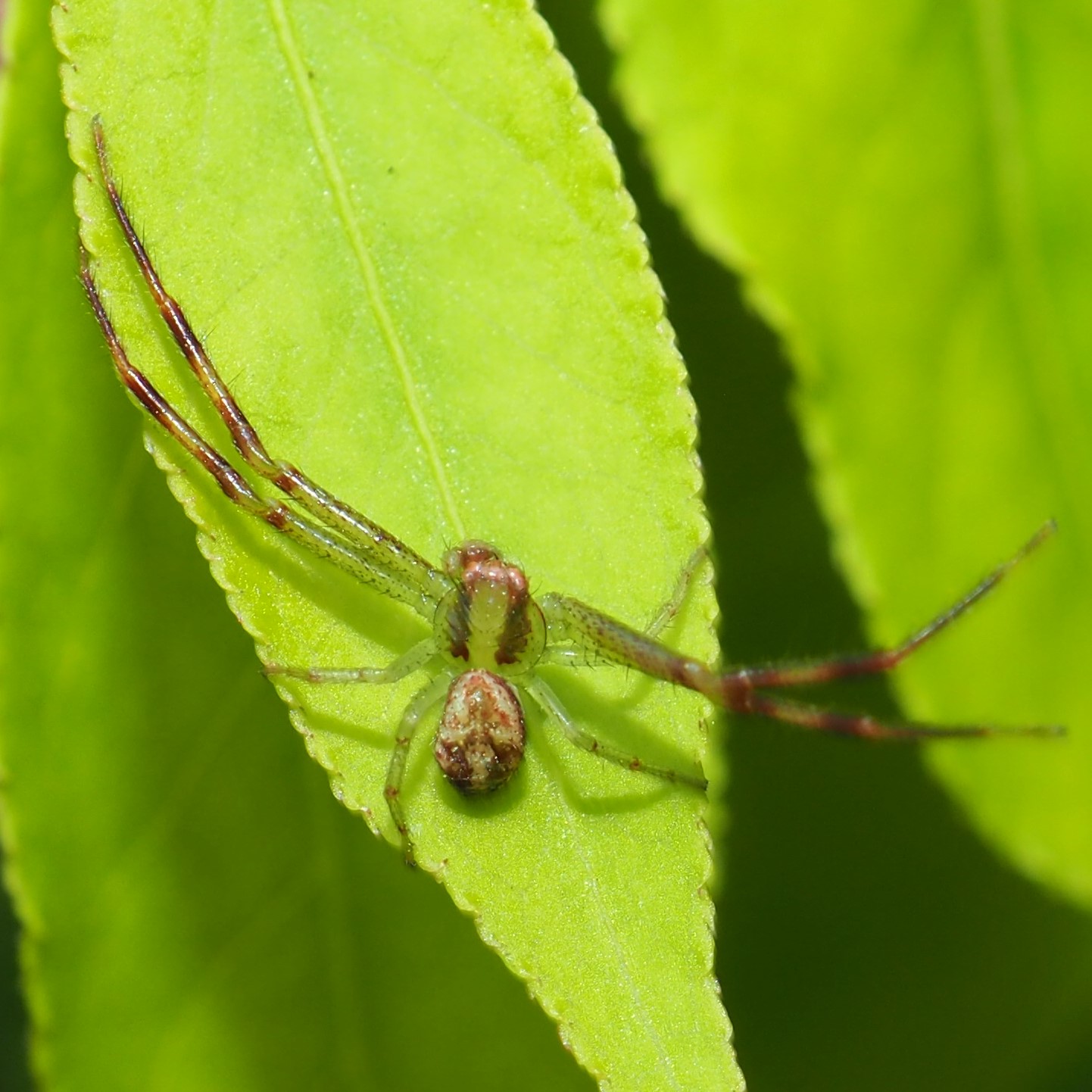
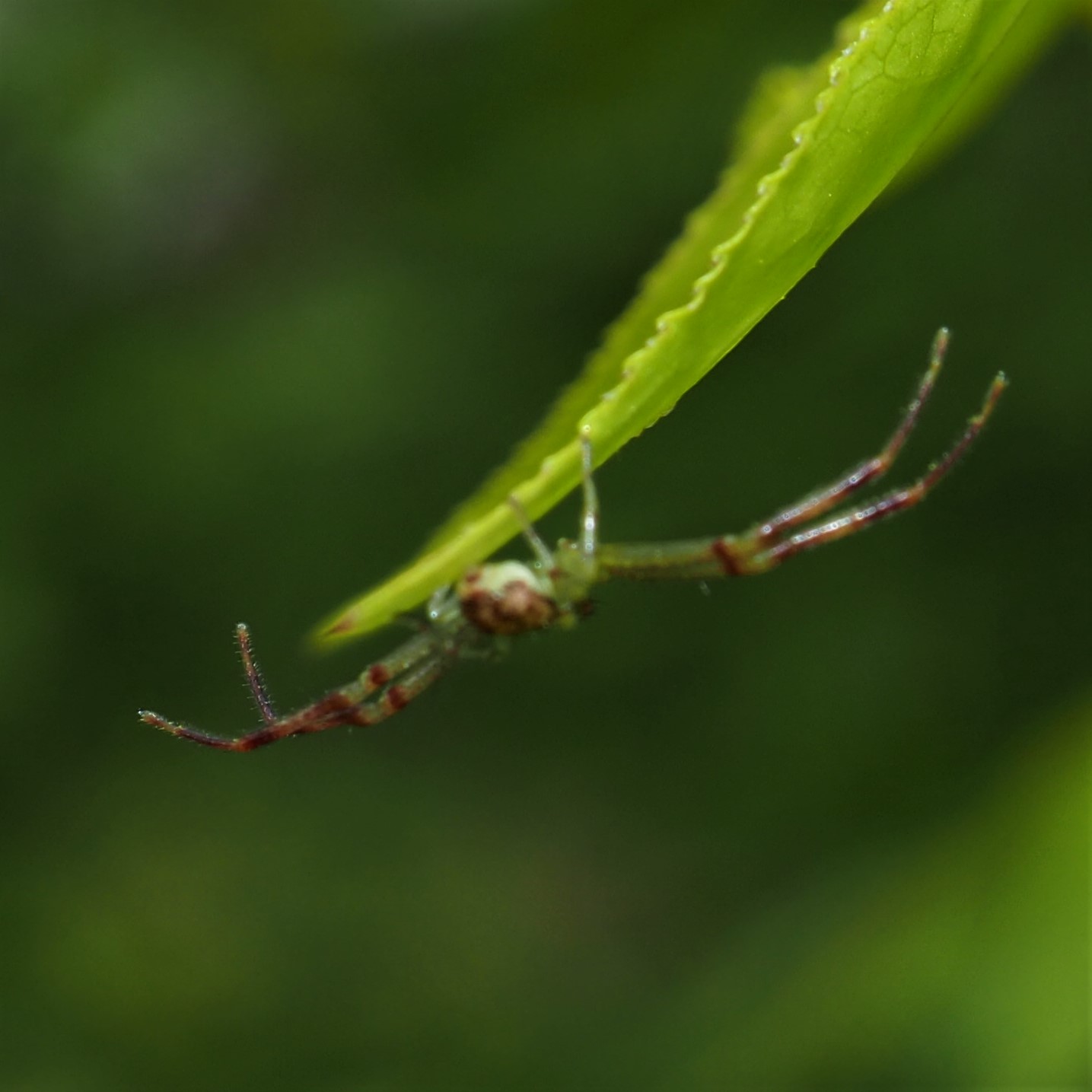
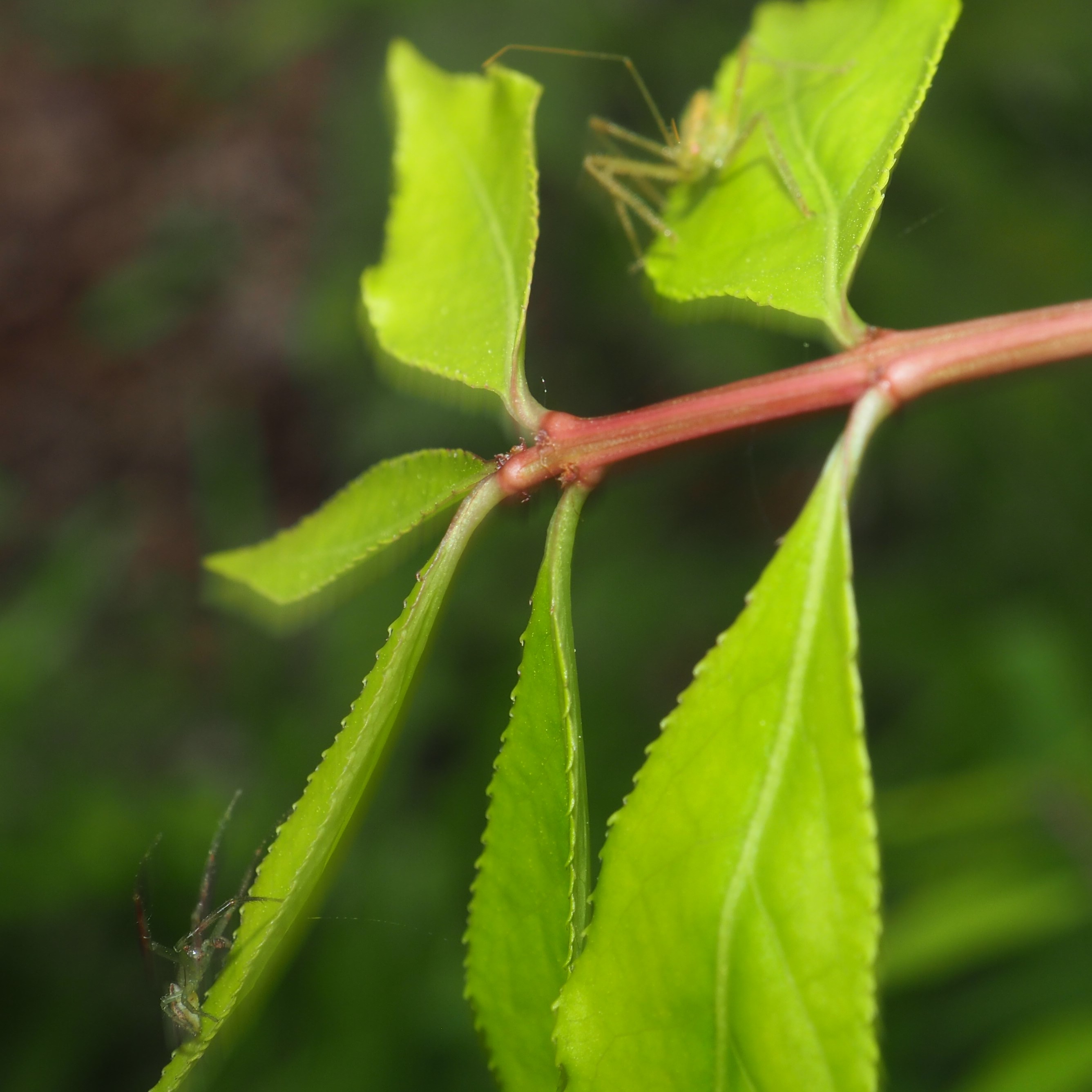
Here is my favorite little Jumping Spider, Naphrys pulex. The next little Jumper (two shots) may or may not be N. pulex. The dark and light pattern seems different. Anyone? Anyone?
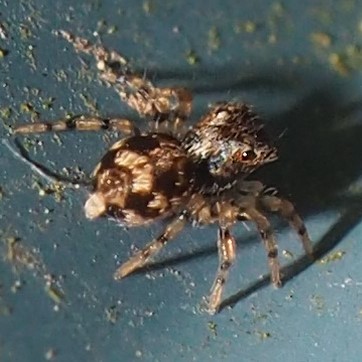
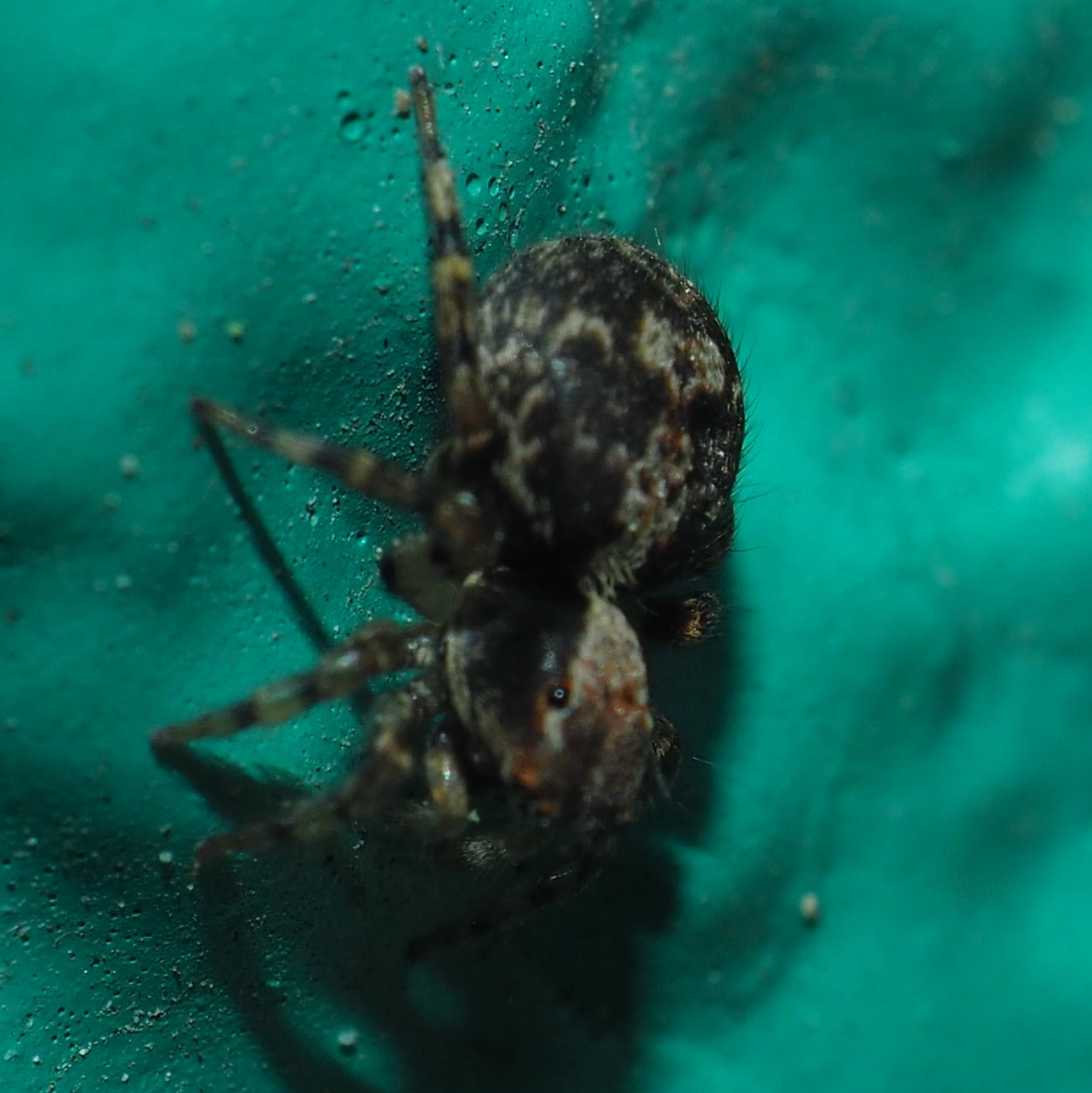
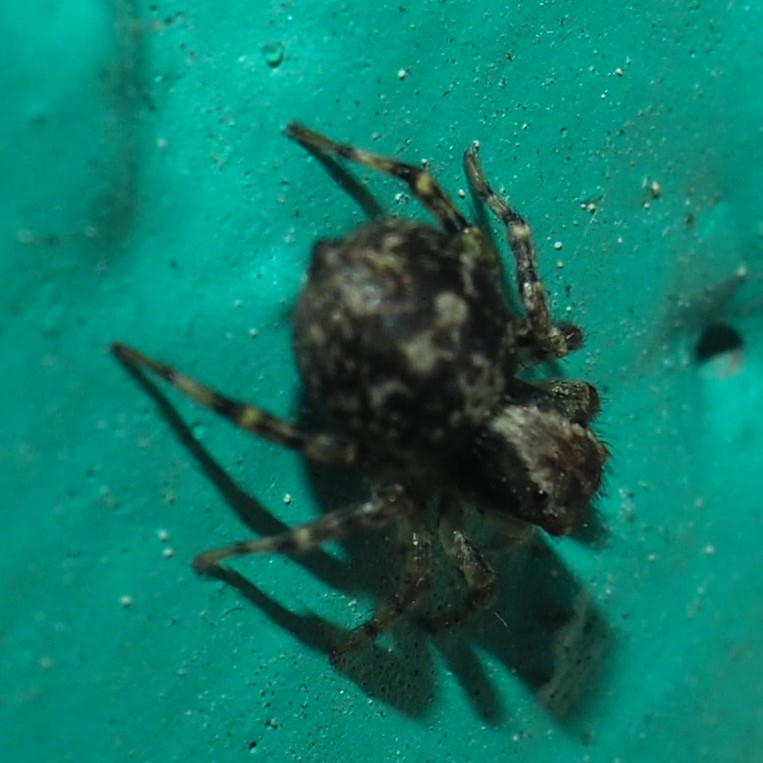
Suddenly this little Spider came into focus enough that I was able to identify it as the Orchard Orbweaver, Leucauge venusta.
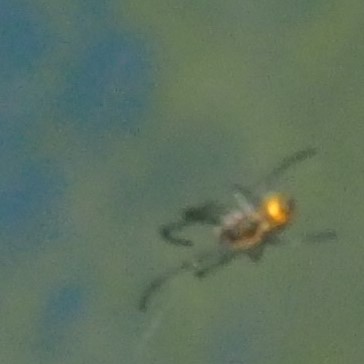
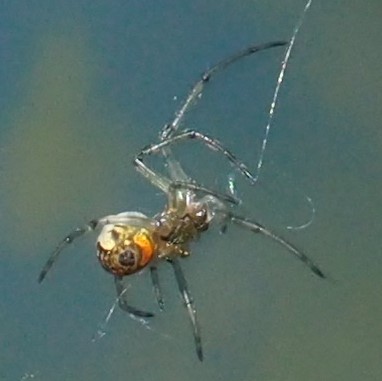
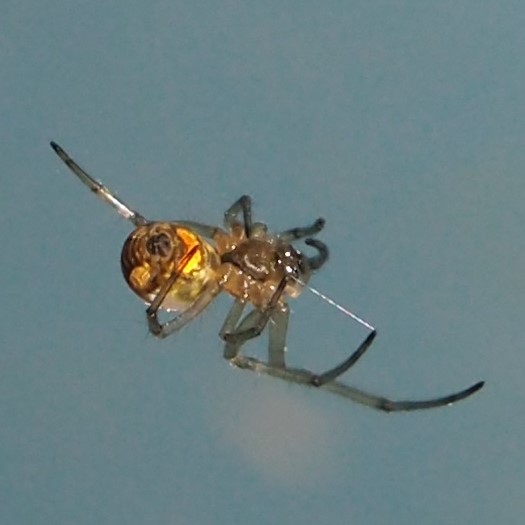
Besides the Spider-eating Wasp, there were a few pretty Wasps. This tiny one may be an Encyrtid Wasp, or maybe a Chalcidoid Wasp. I know nothing about the second one, but admired its taste in wings. The third one is supposed to be in the subfamily Campopleginae.
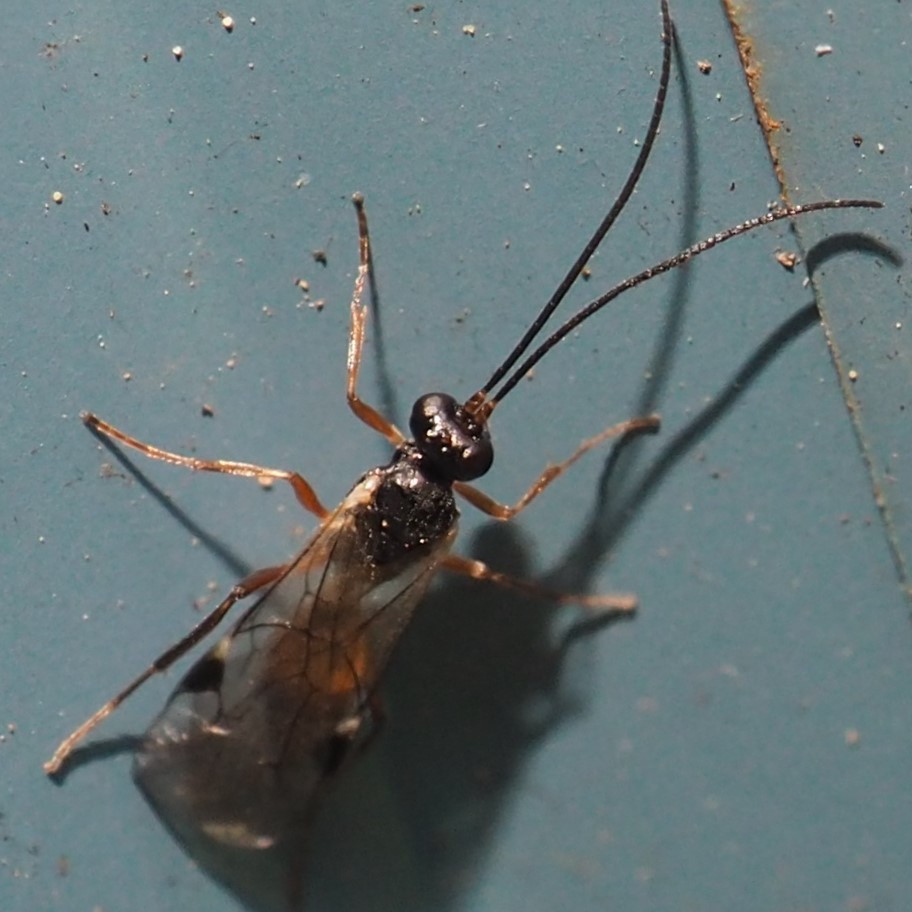
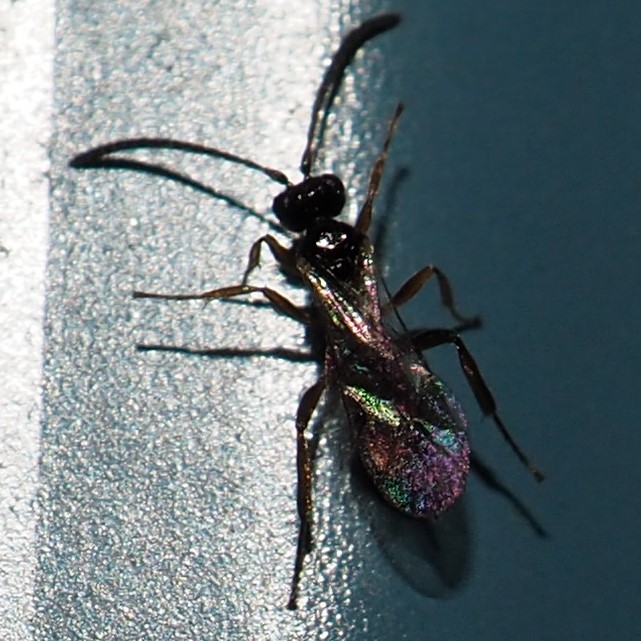
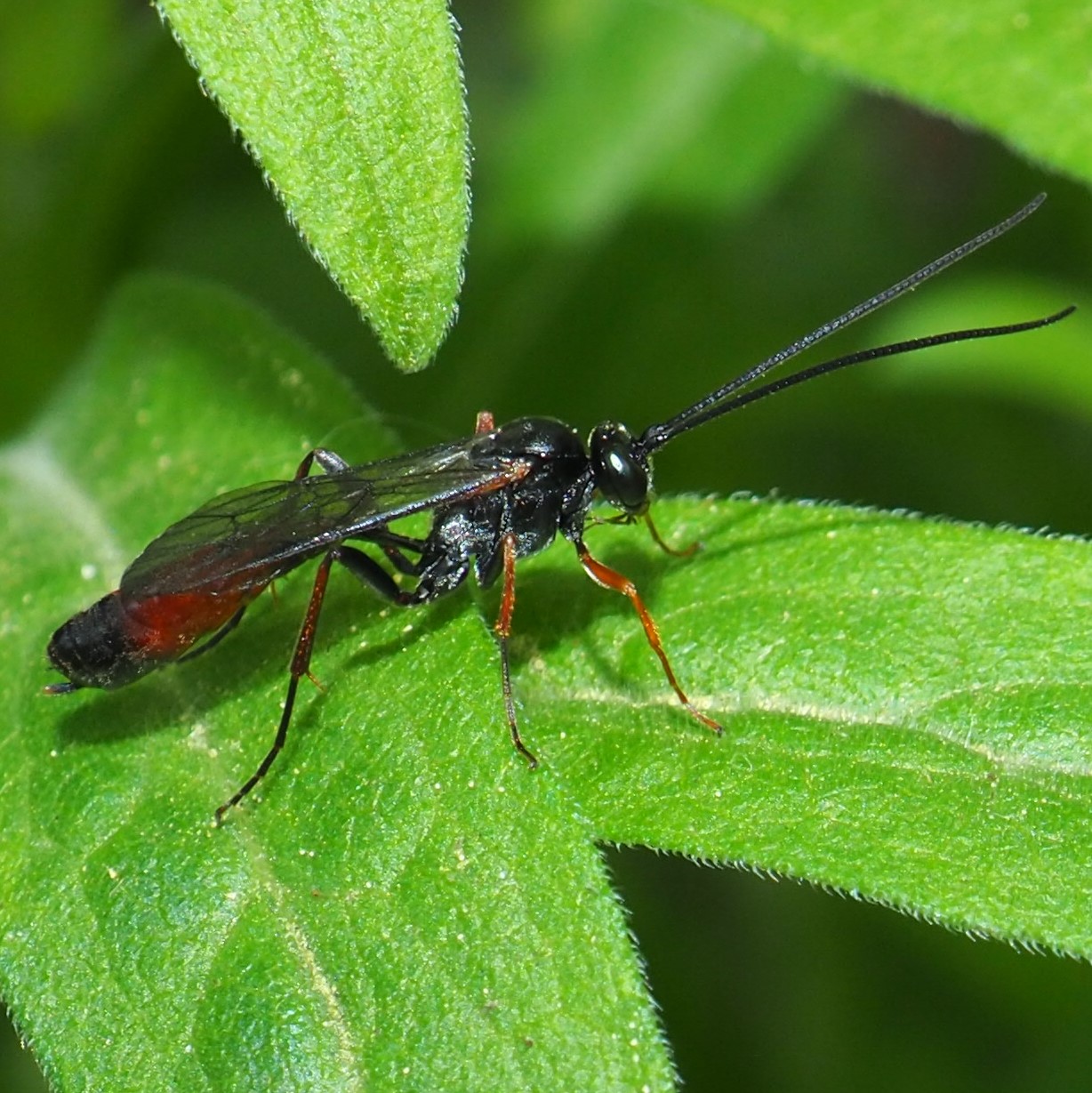
I was going to say at this point, We have reached the end of our study of the Backyard for this week, but you know what happens when you have finished and suddenly decide to slip around the shop exterior and see if there is anything new. Damned if there wasn't something new! Here it comes.
I did the forbidden thing and slipped around the Workshop exterior to see if there were any new developments with the Barklouse eggs that we saw the Momma of on May 6. Naah, couldn't be. I am hungry and need to feed the fishes yet. But the camera is heavy around my neck and so I take it down and point it at the place where the Momma laid the eggs. (This is all speculation, you know, since we didn't actually see her lay the eggs but only infer it since the eggs were laid right where she sat for two days.) Here is the Momma as we last saw her; then the eggs she left behind; and last, the eggs with 5 little nymphs that do look more like Ectopsocus nymphs than any other kind I know.
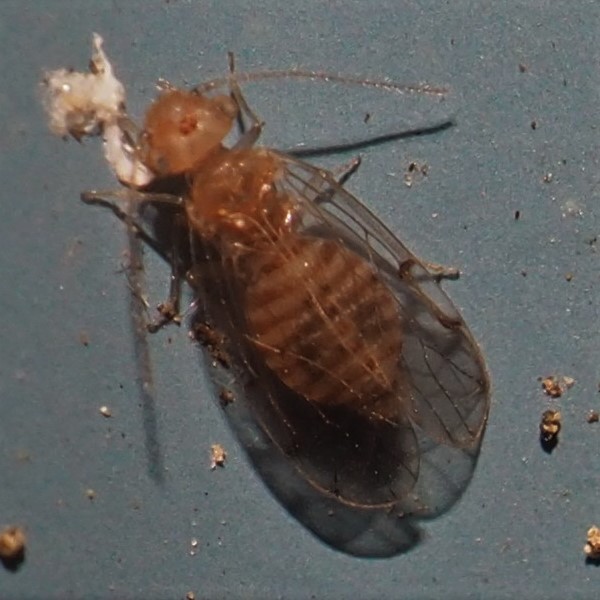

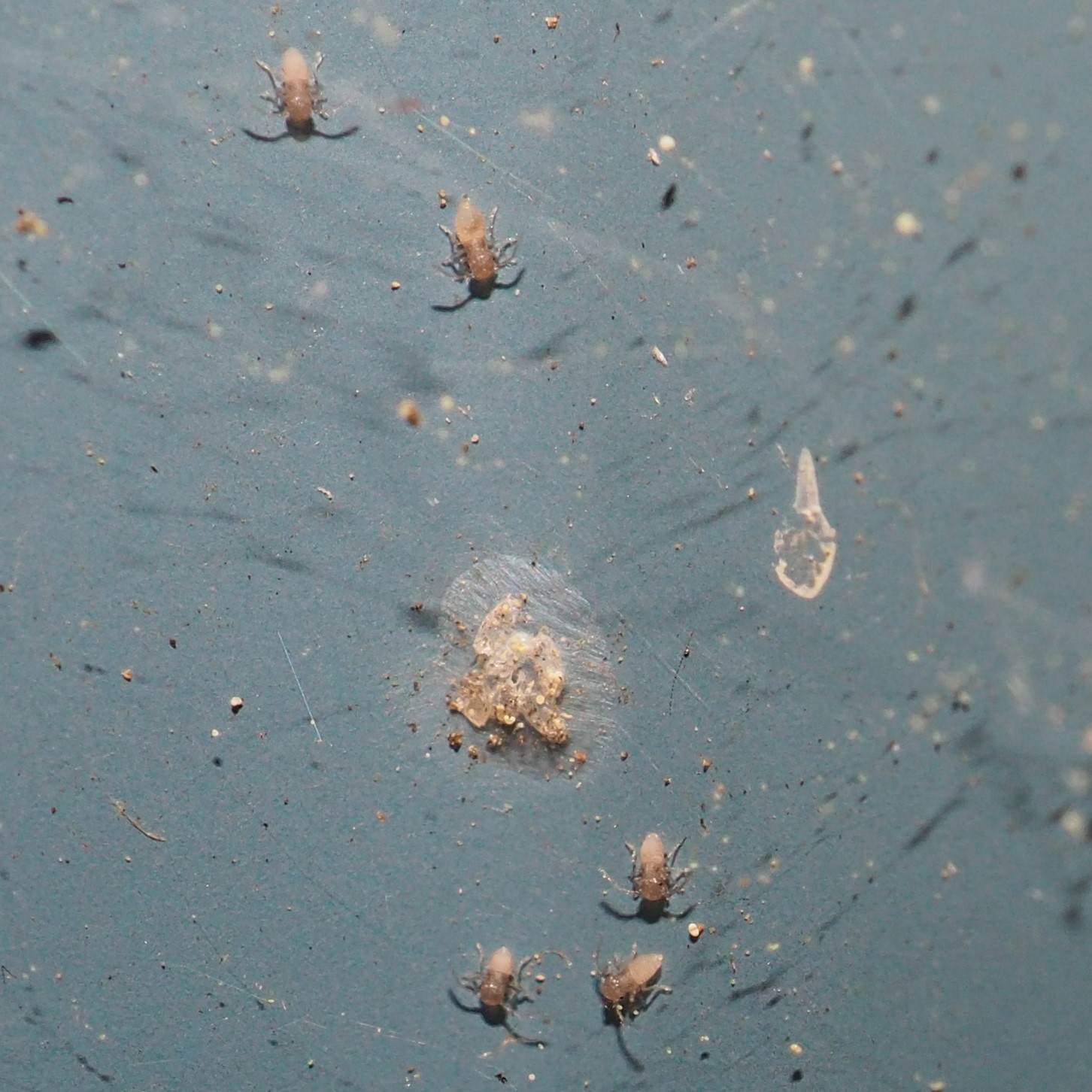
Love, Martha
Back to May 16, 2021
Forward to May 30, 2021
Back to main menu
copyright Martha O'Kennon 2021






















































































































